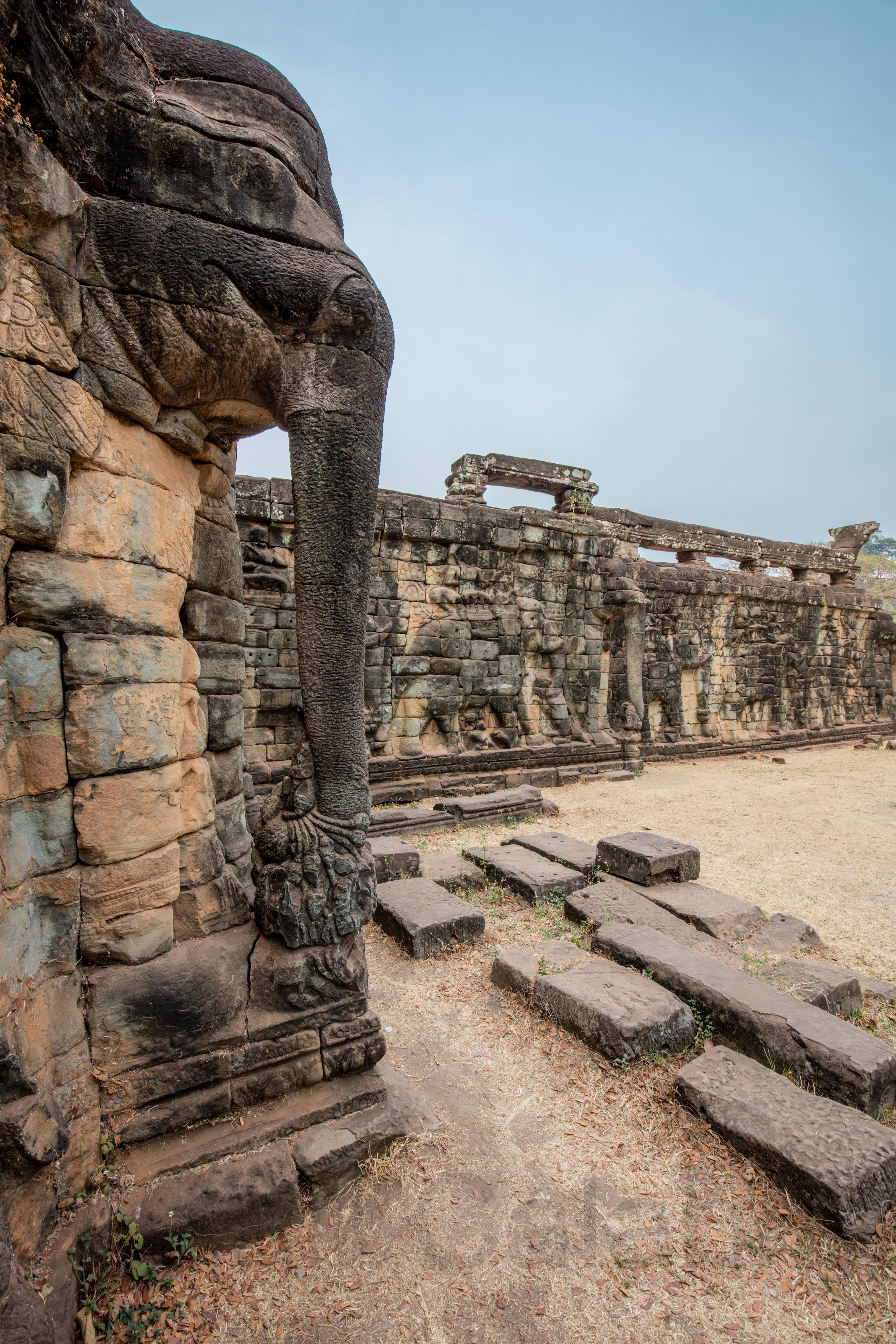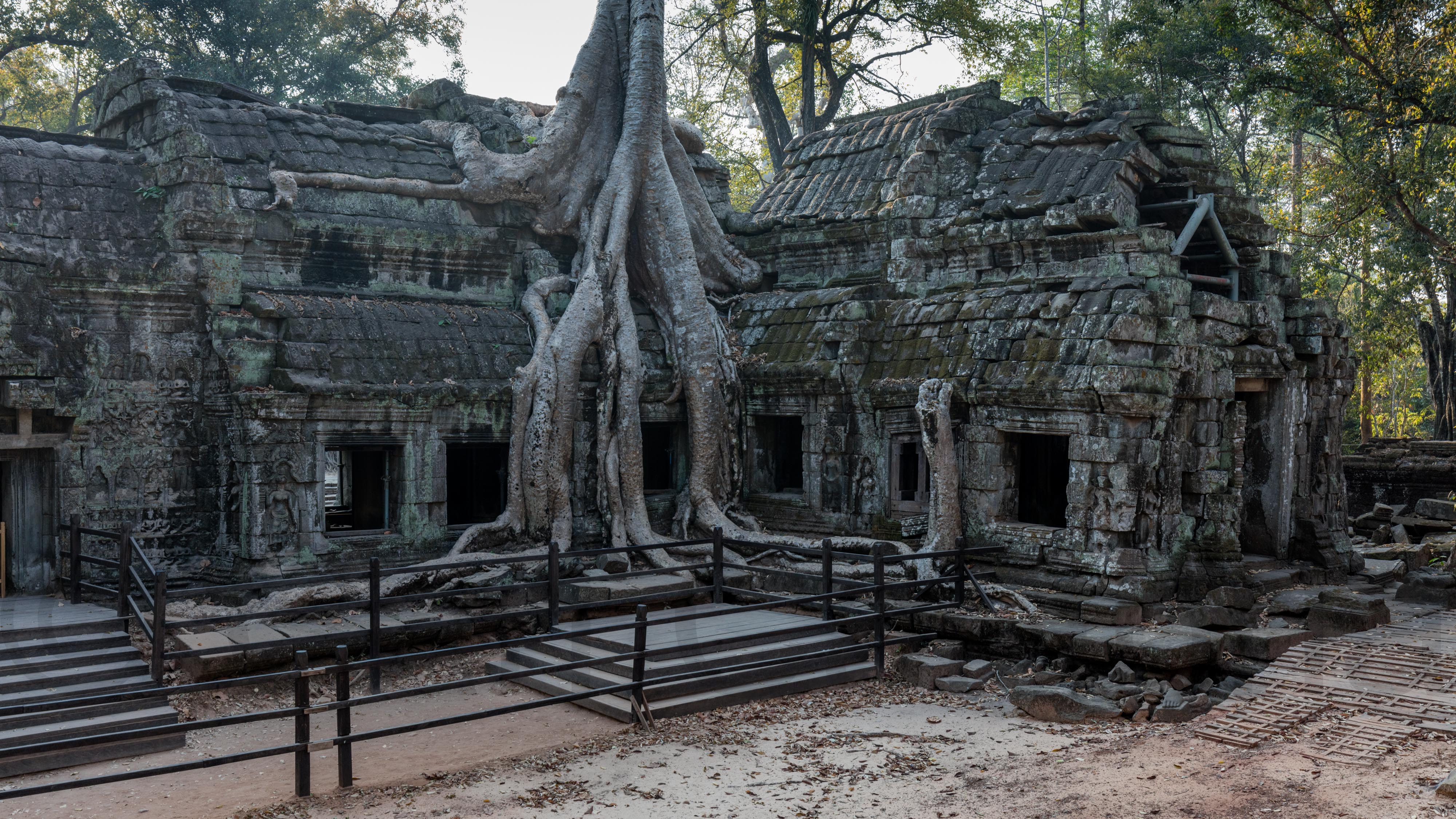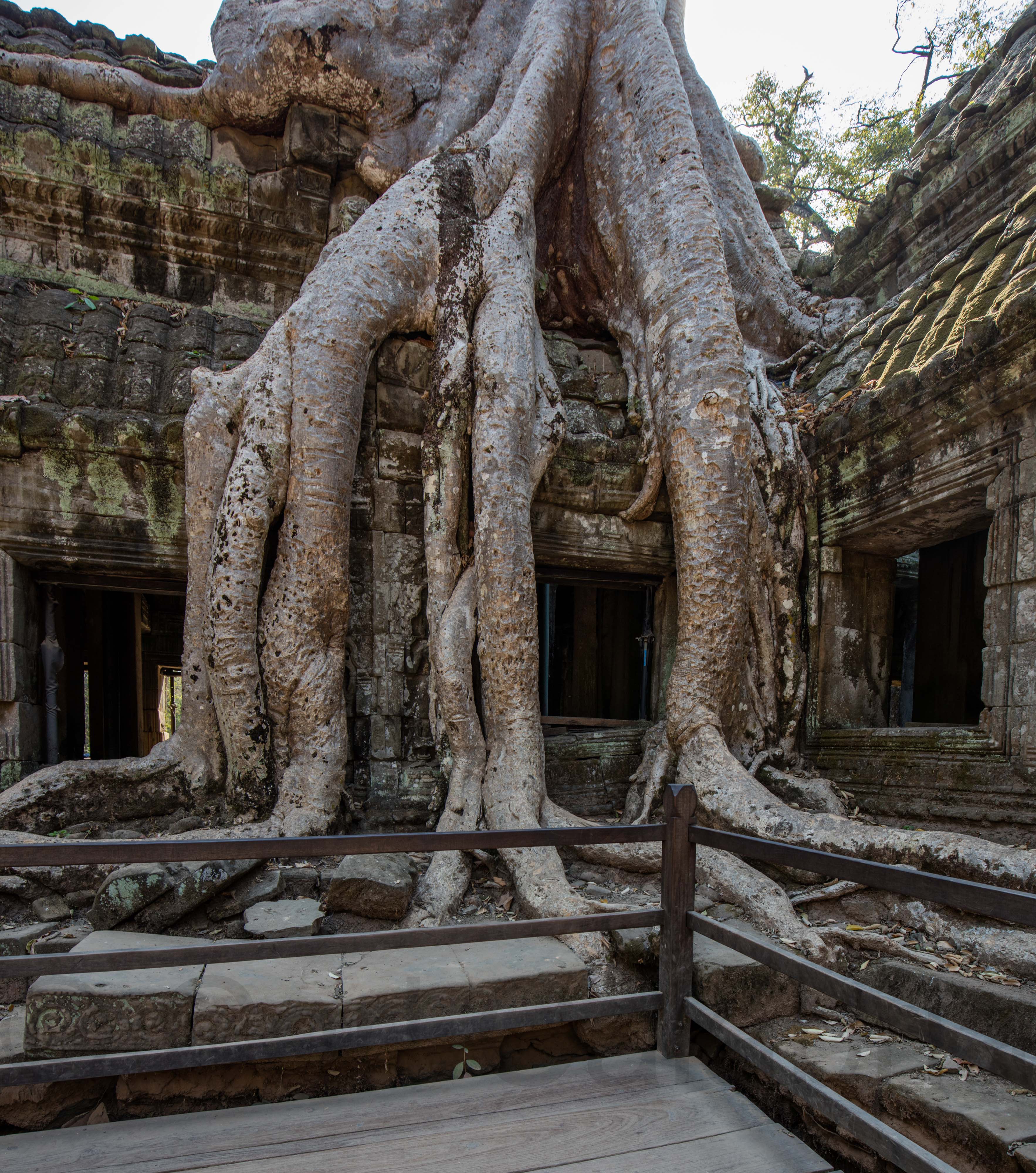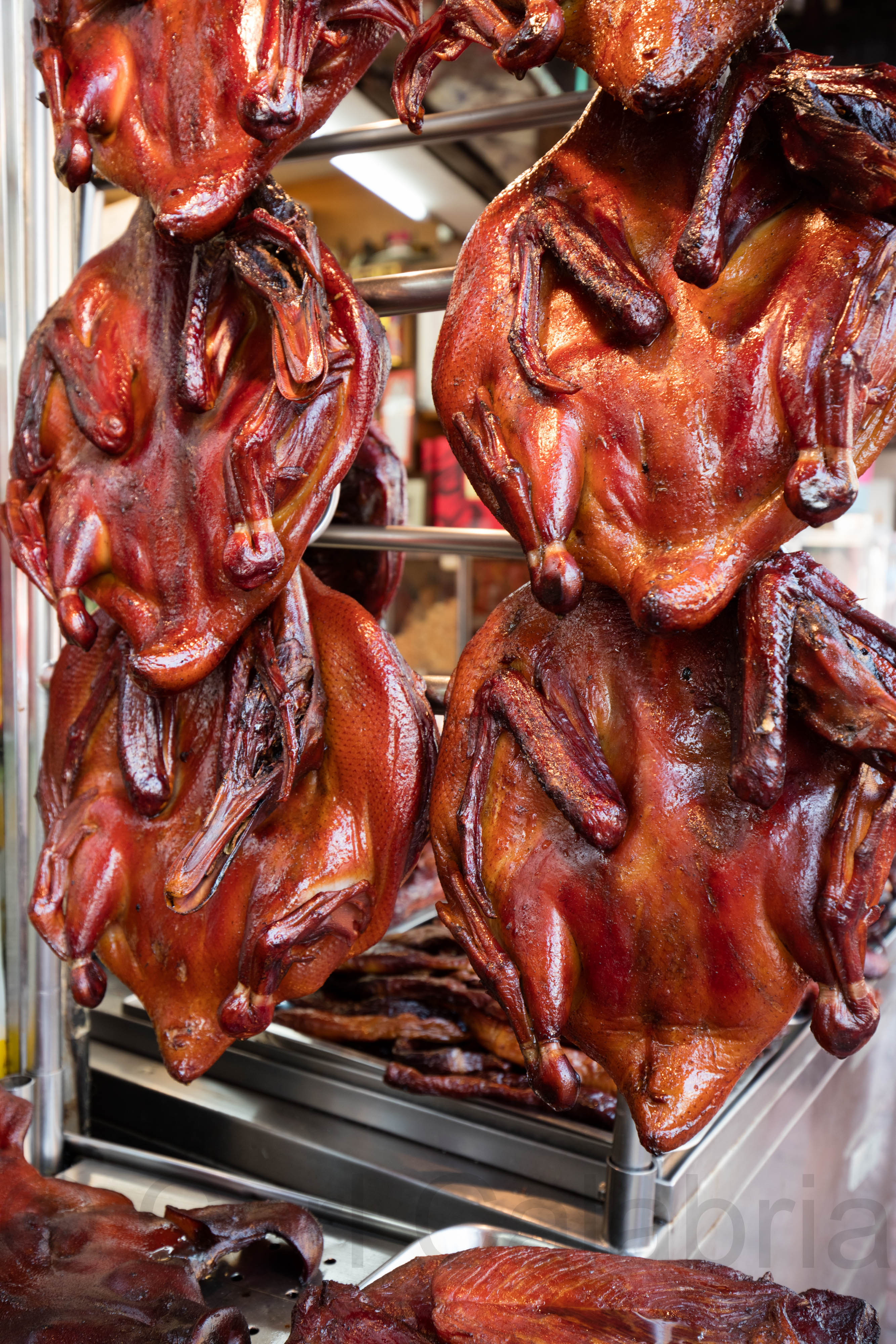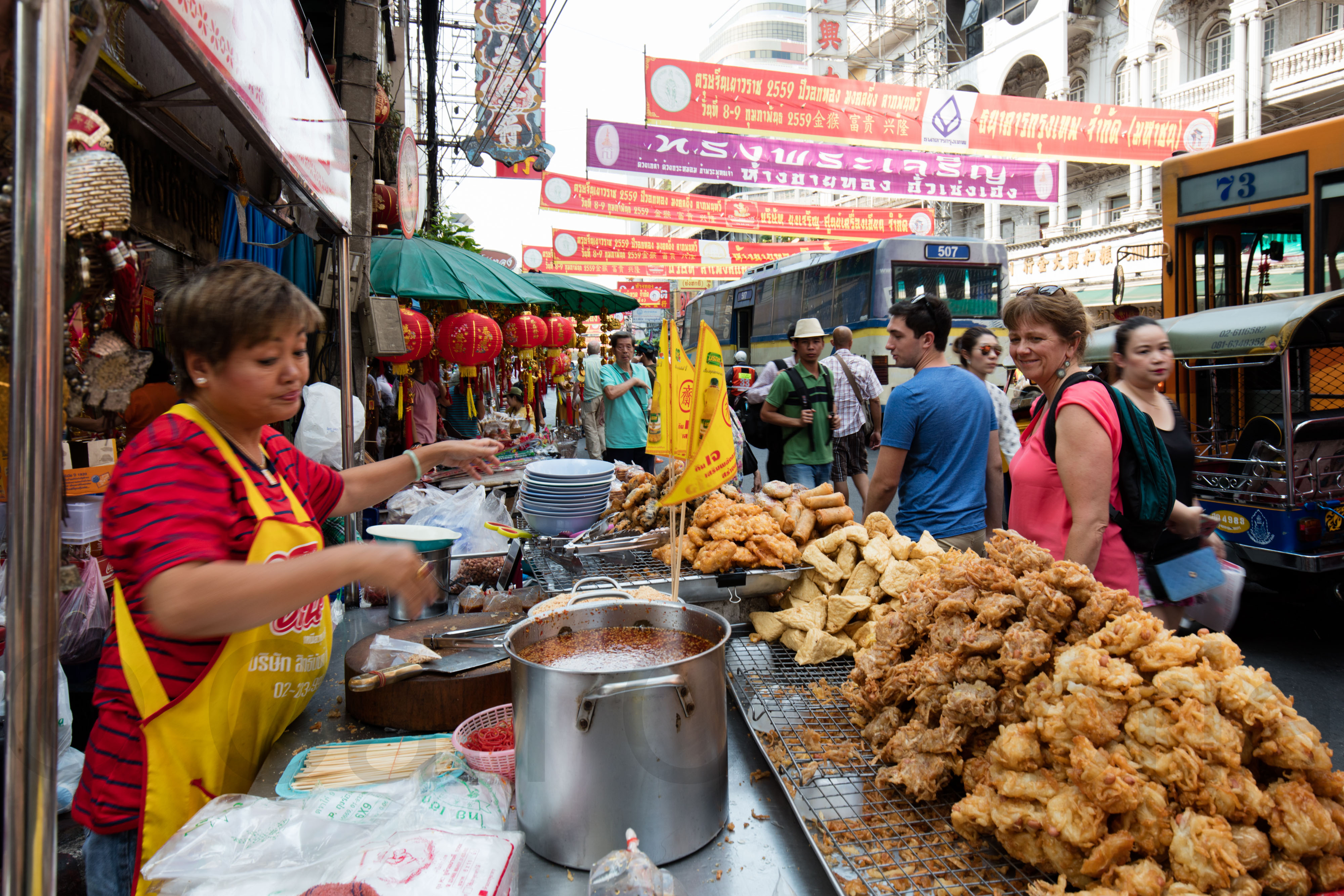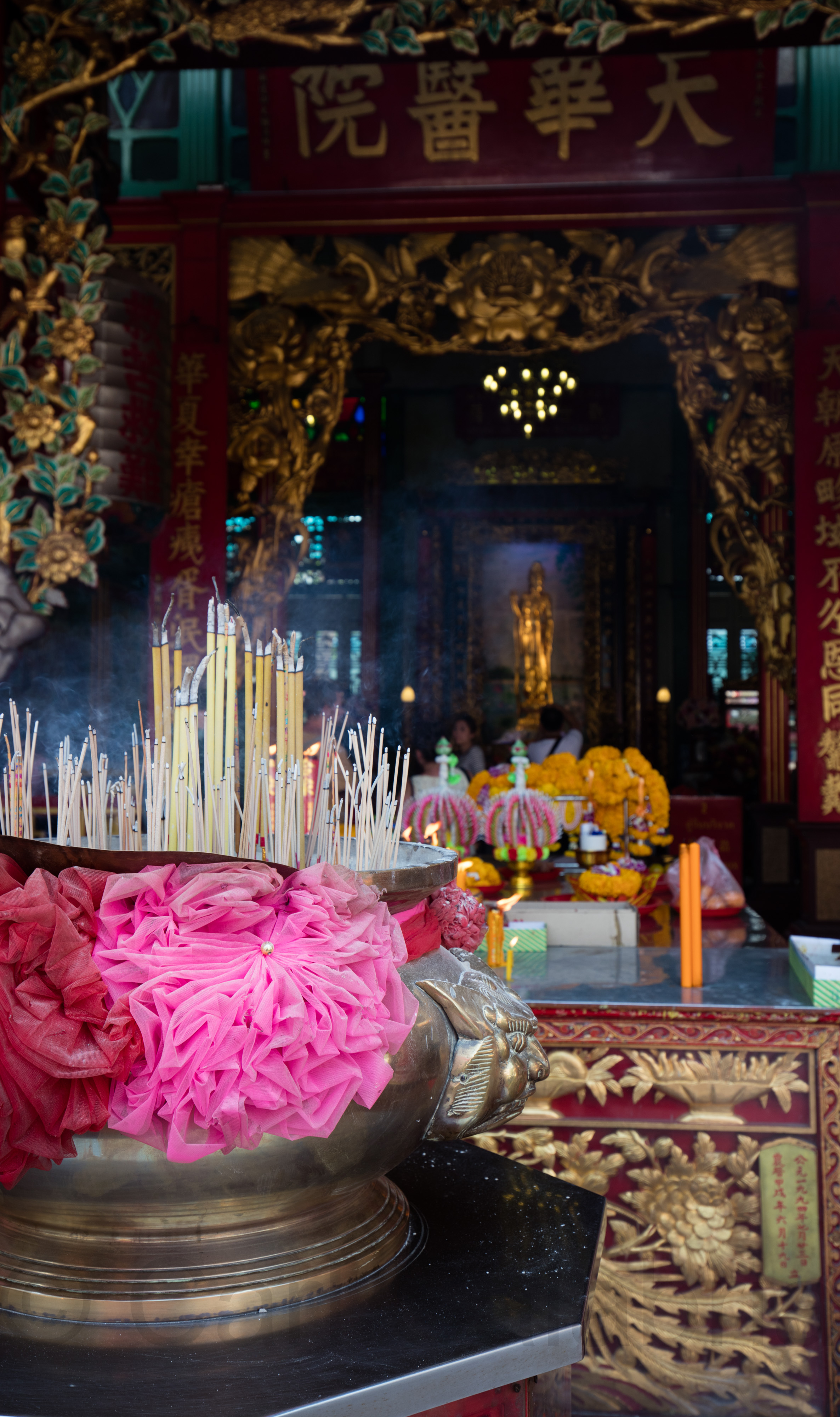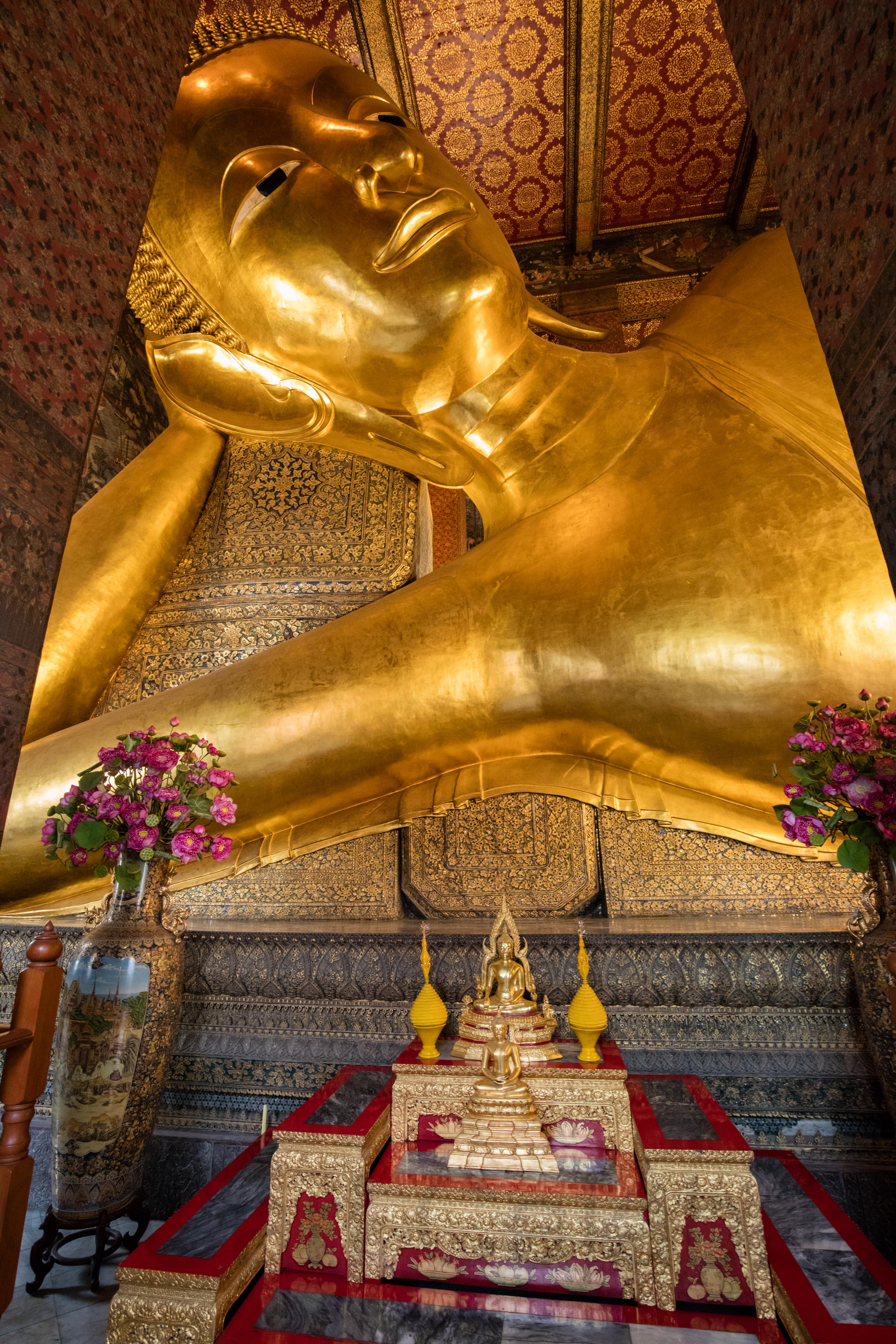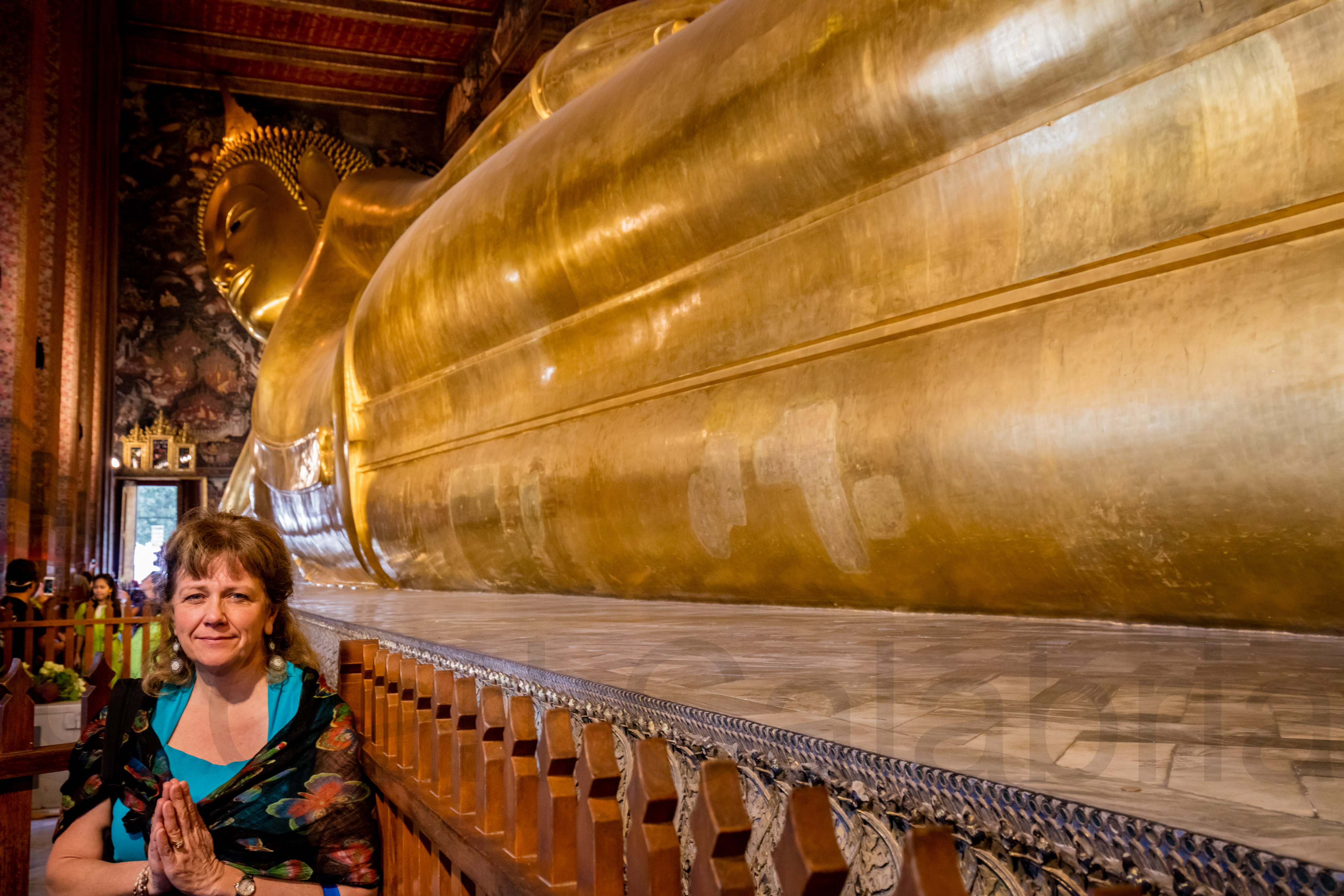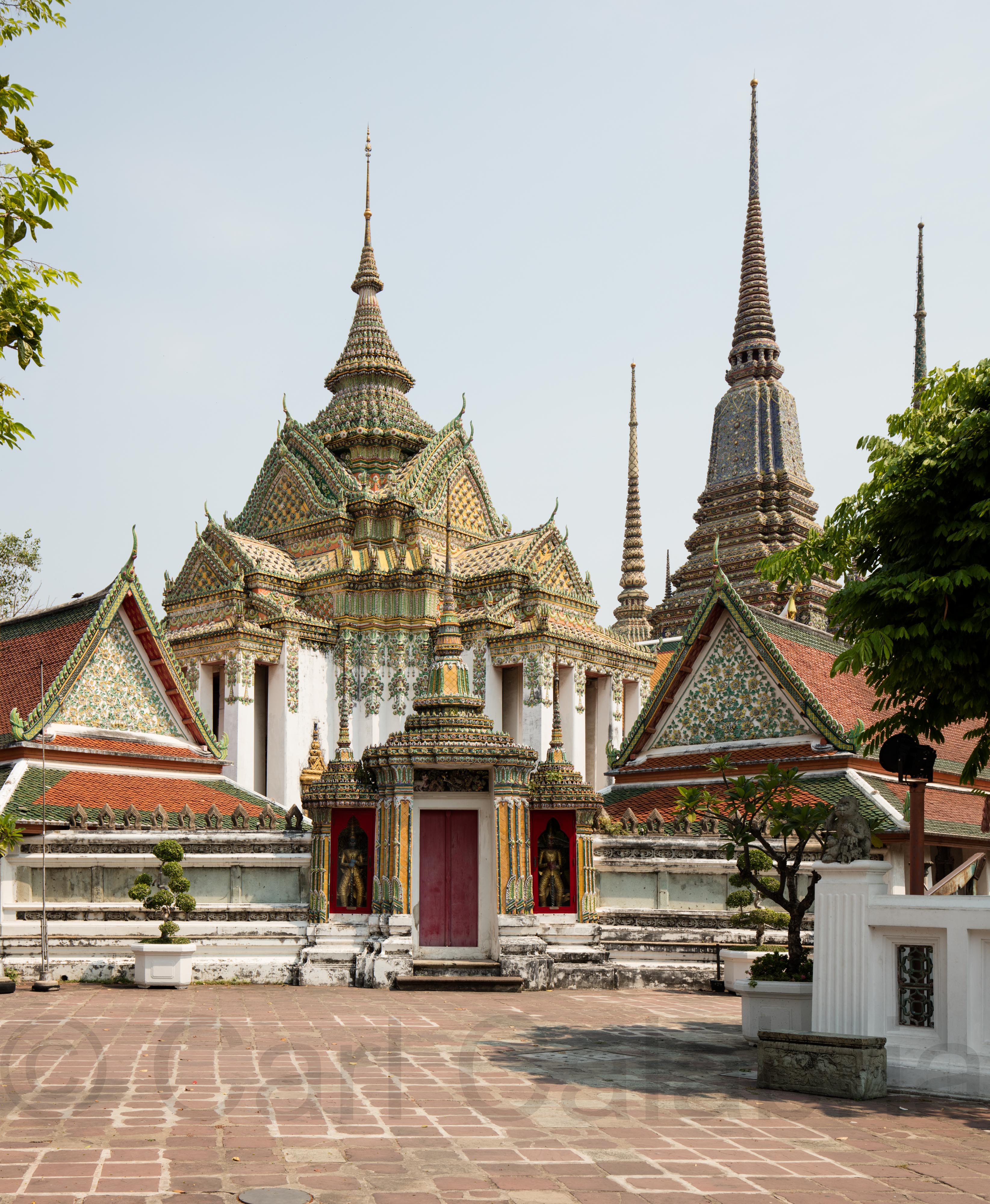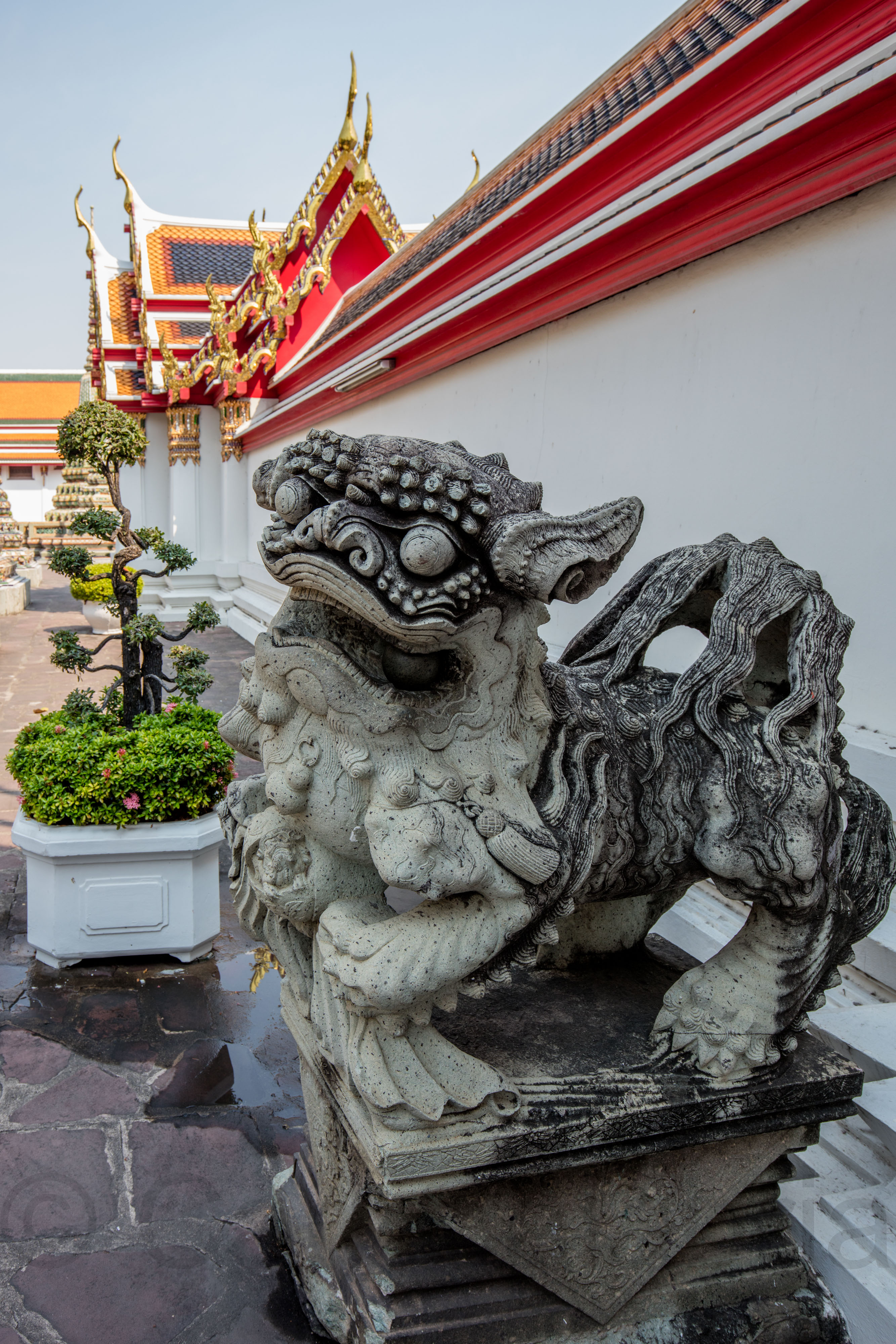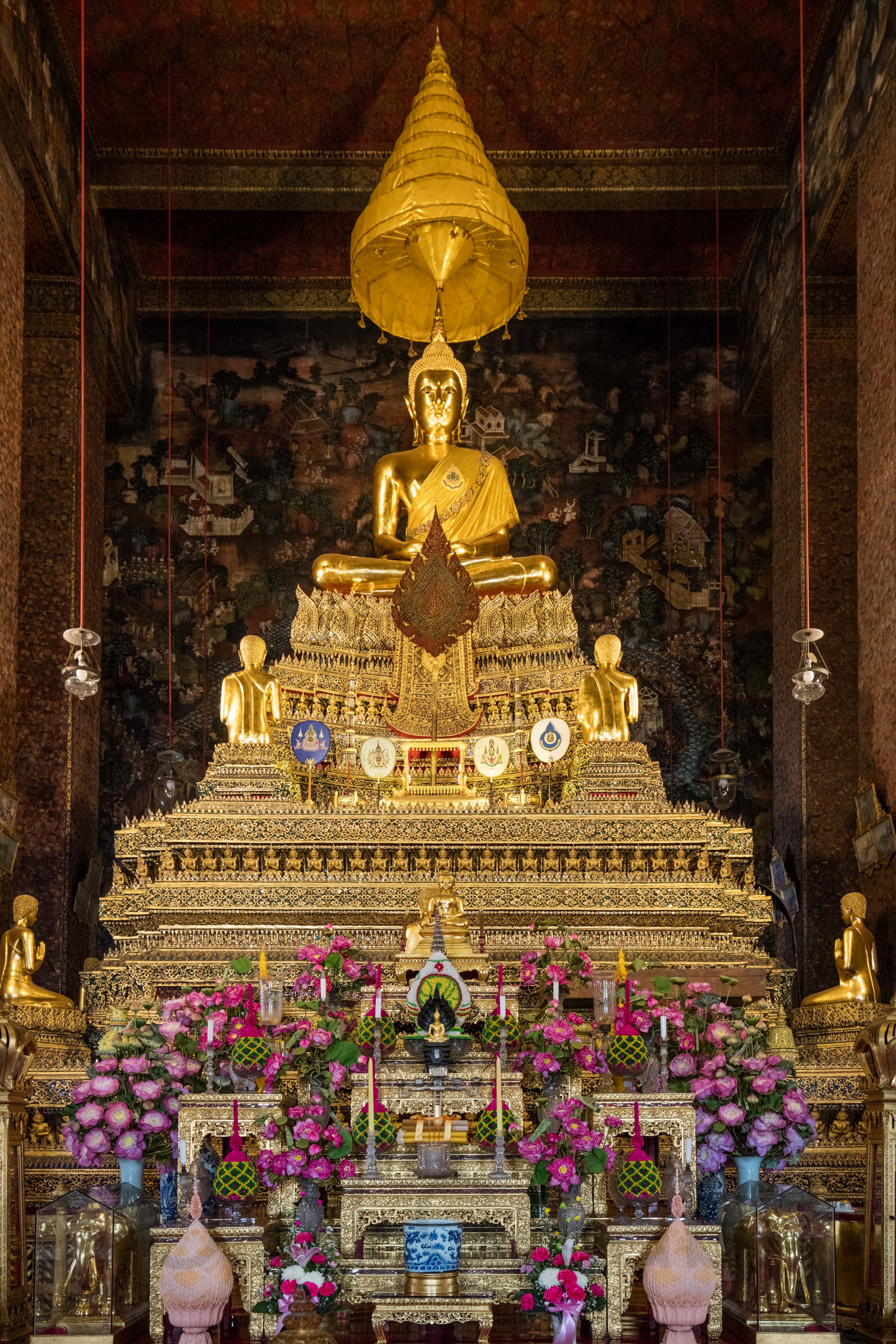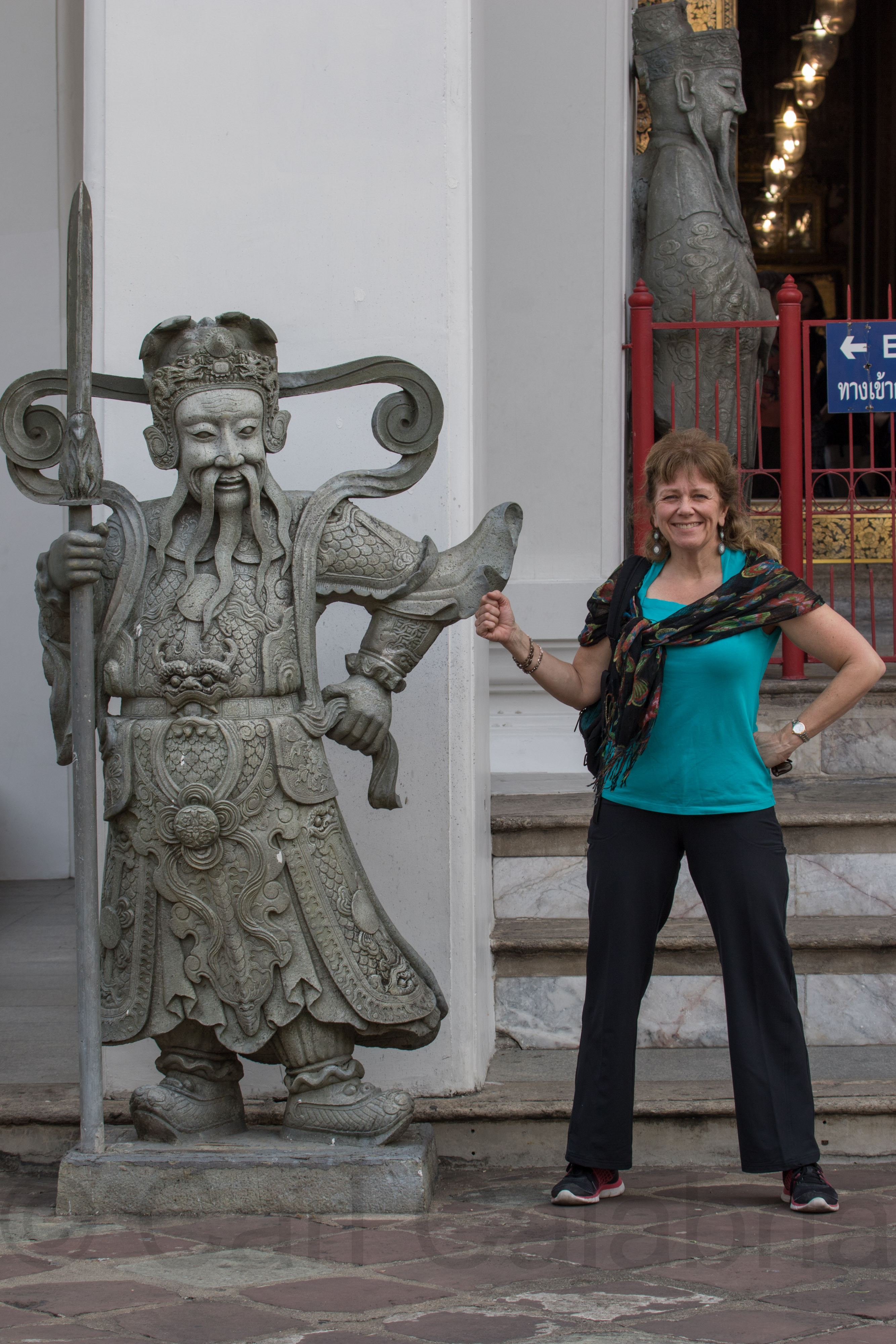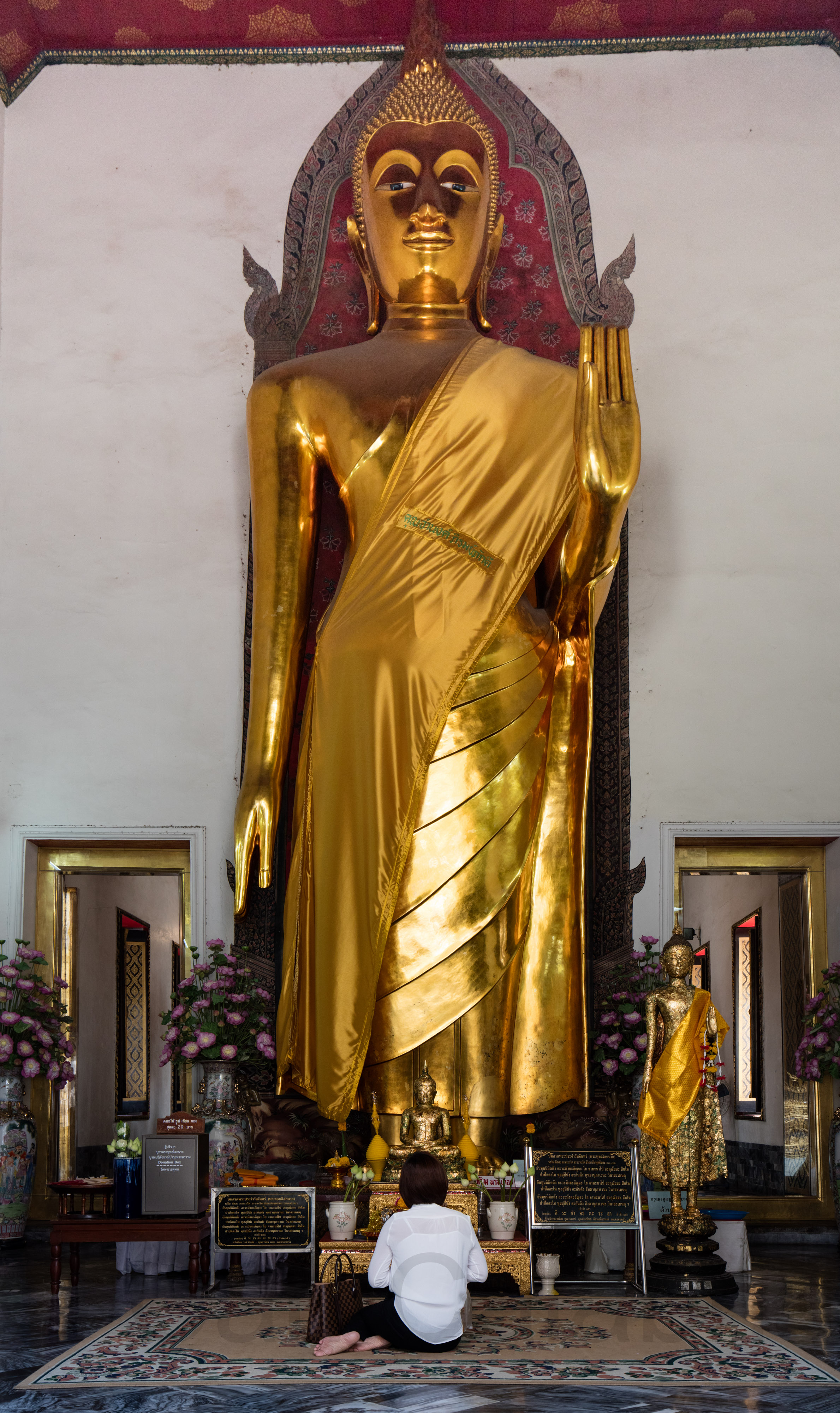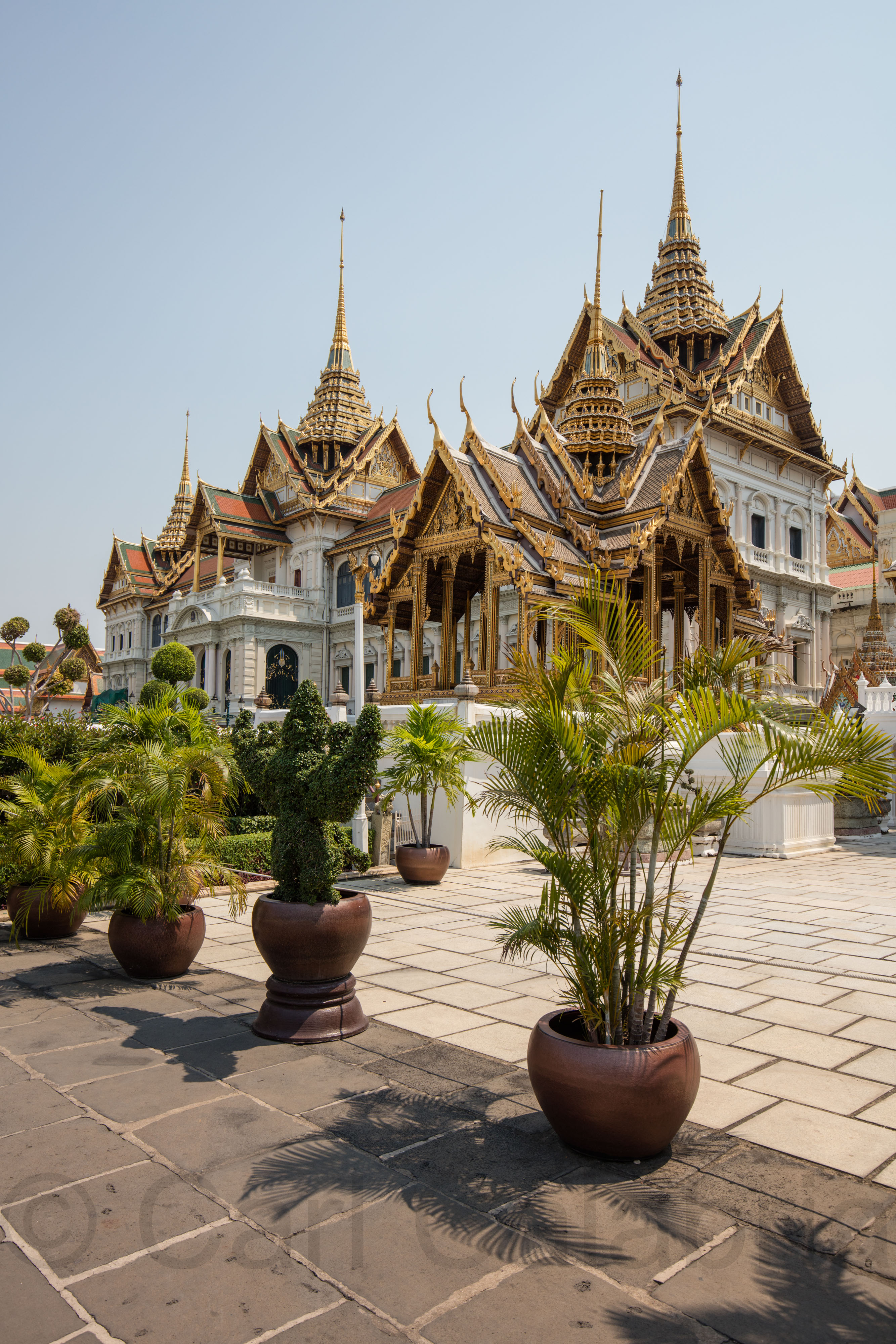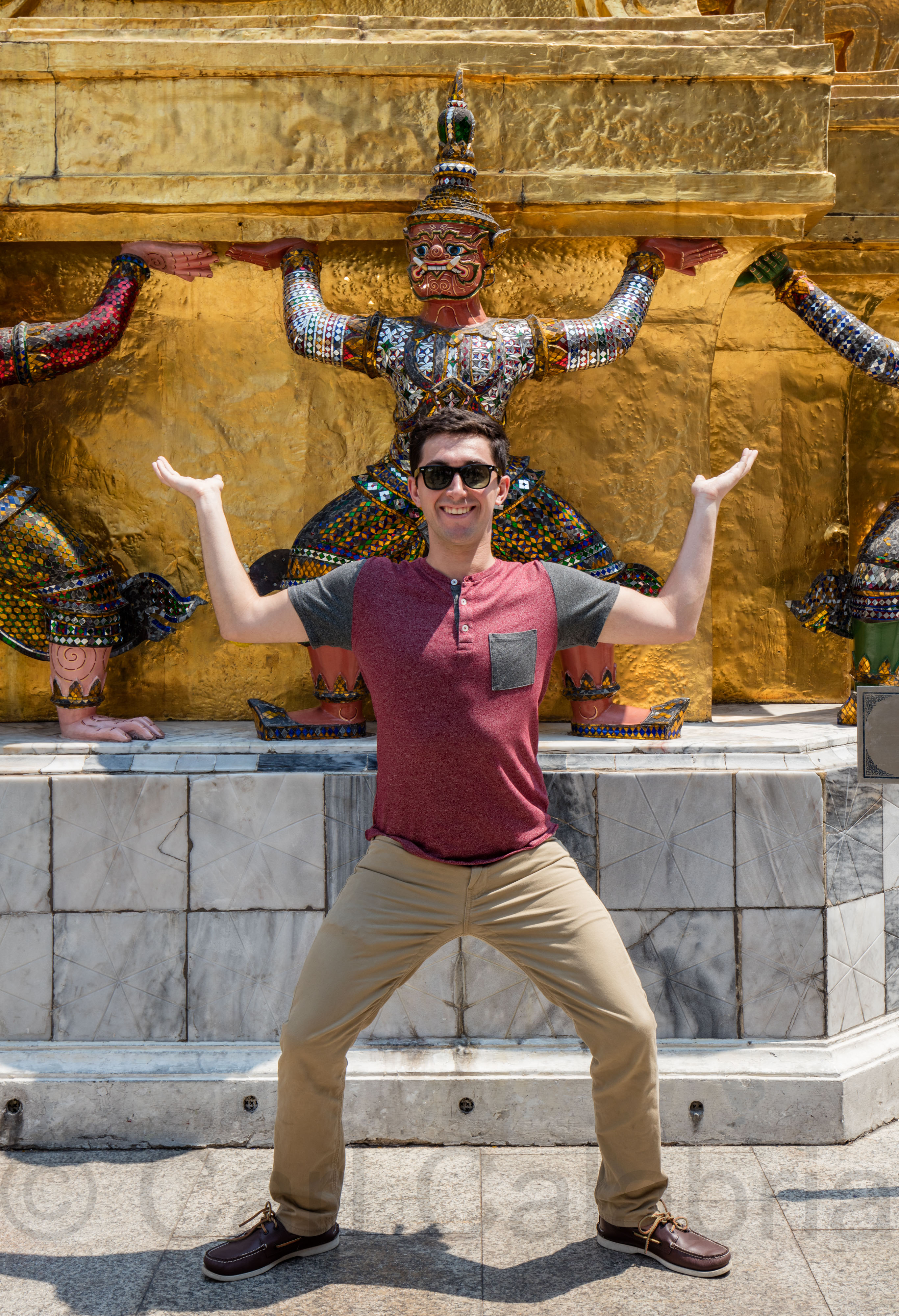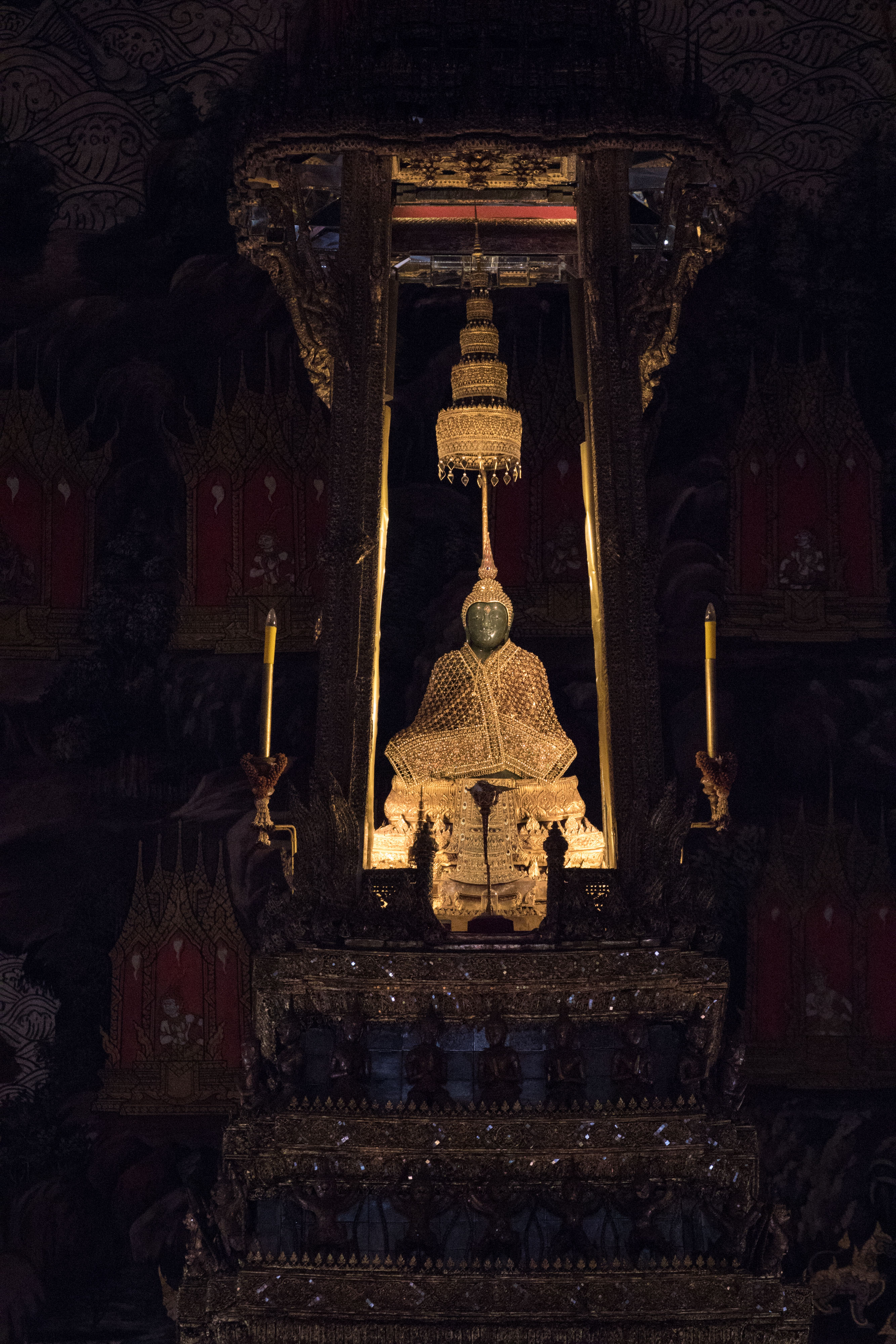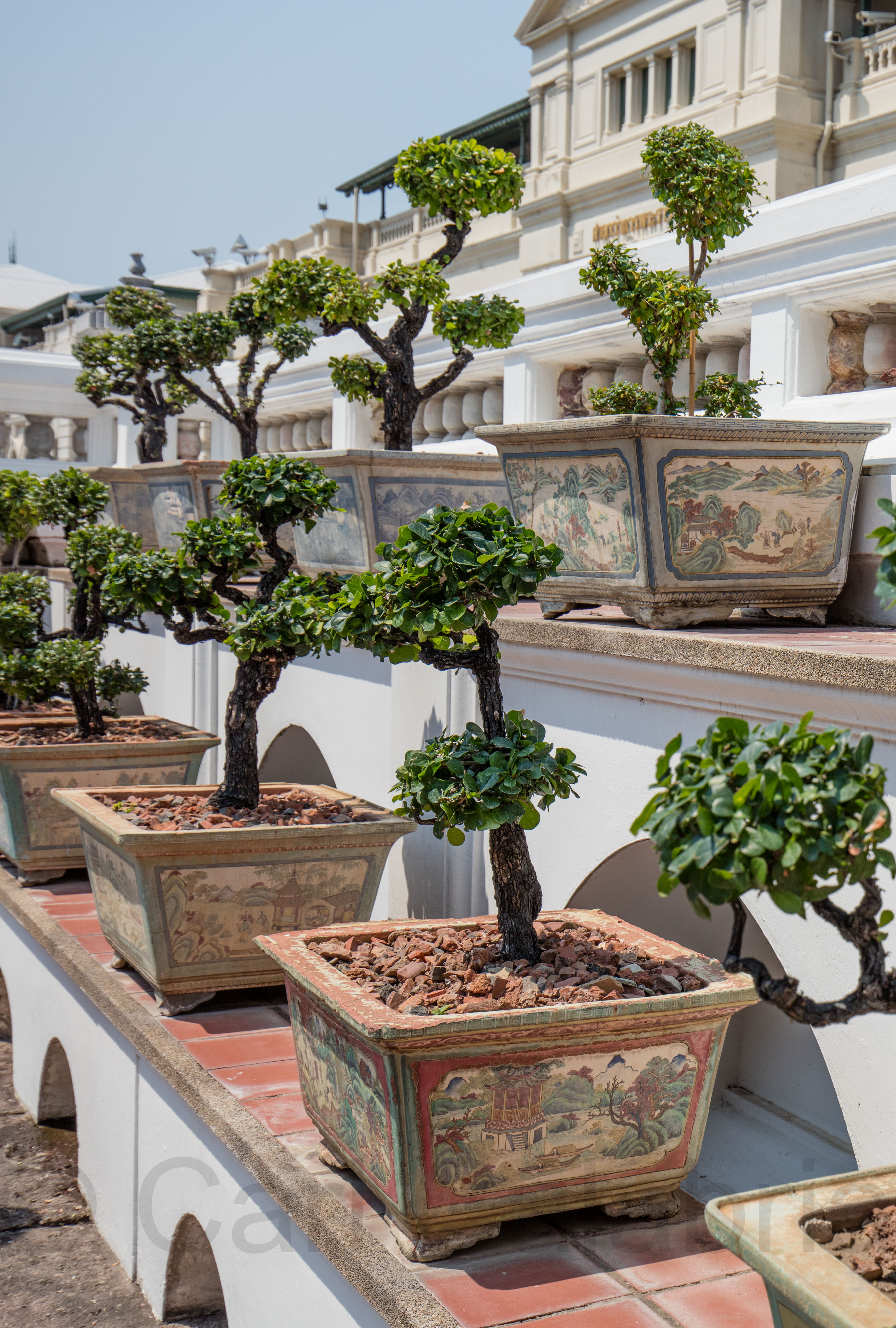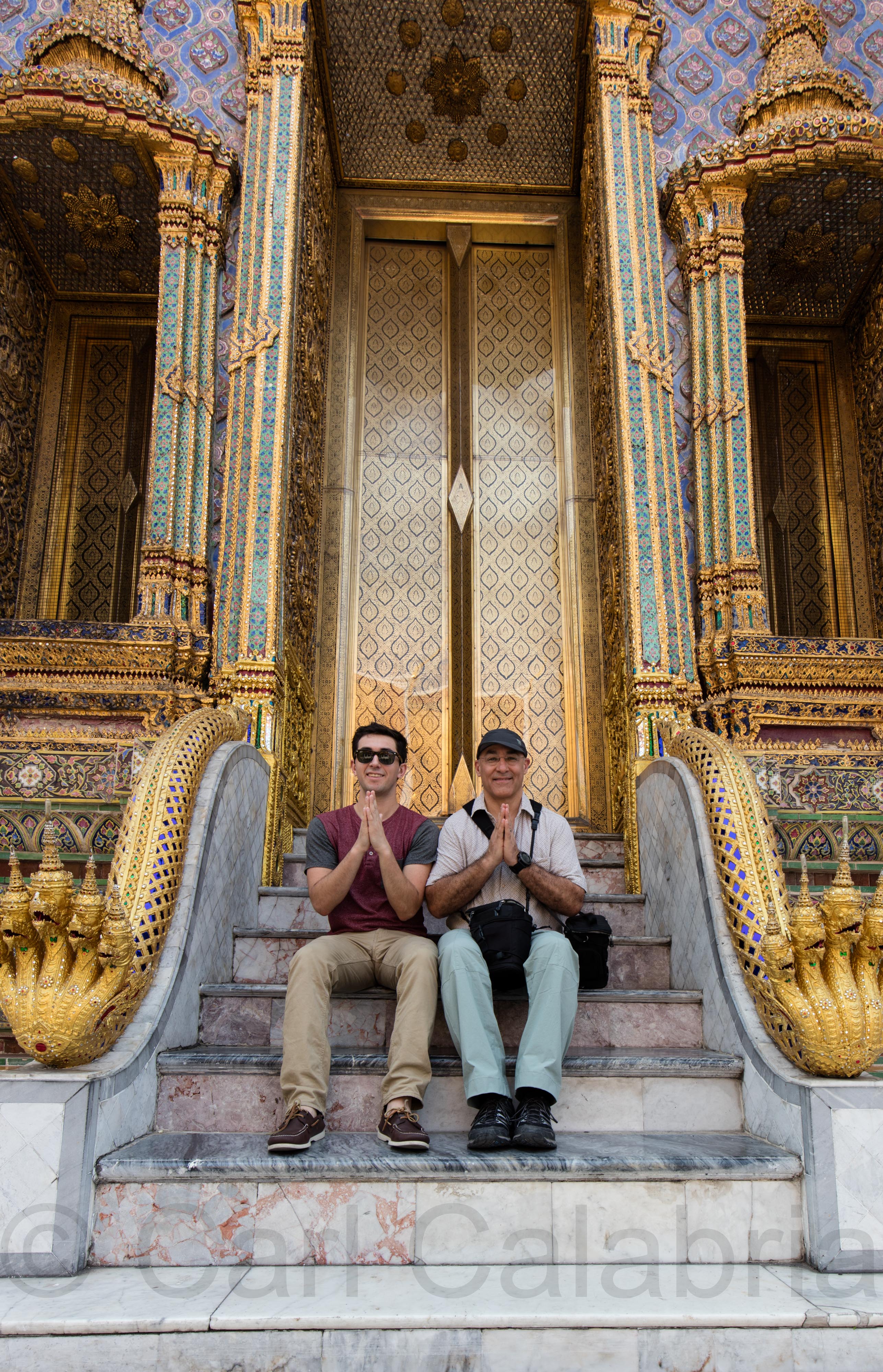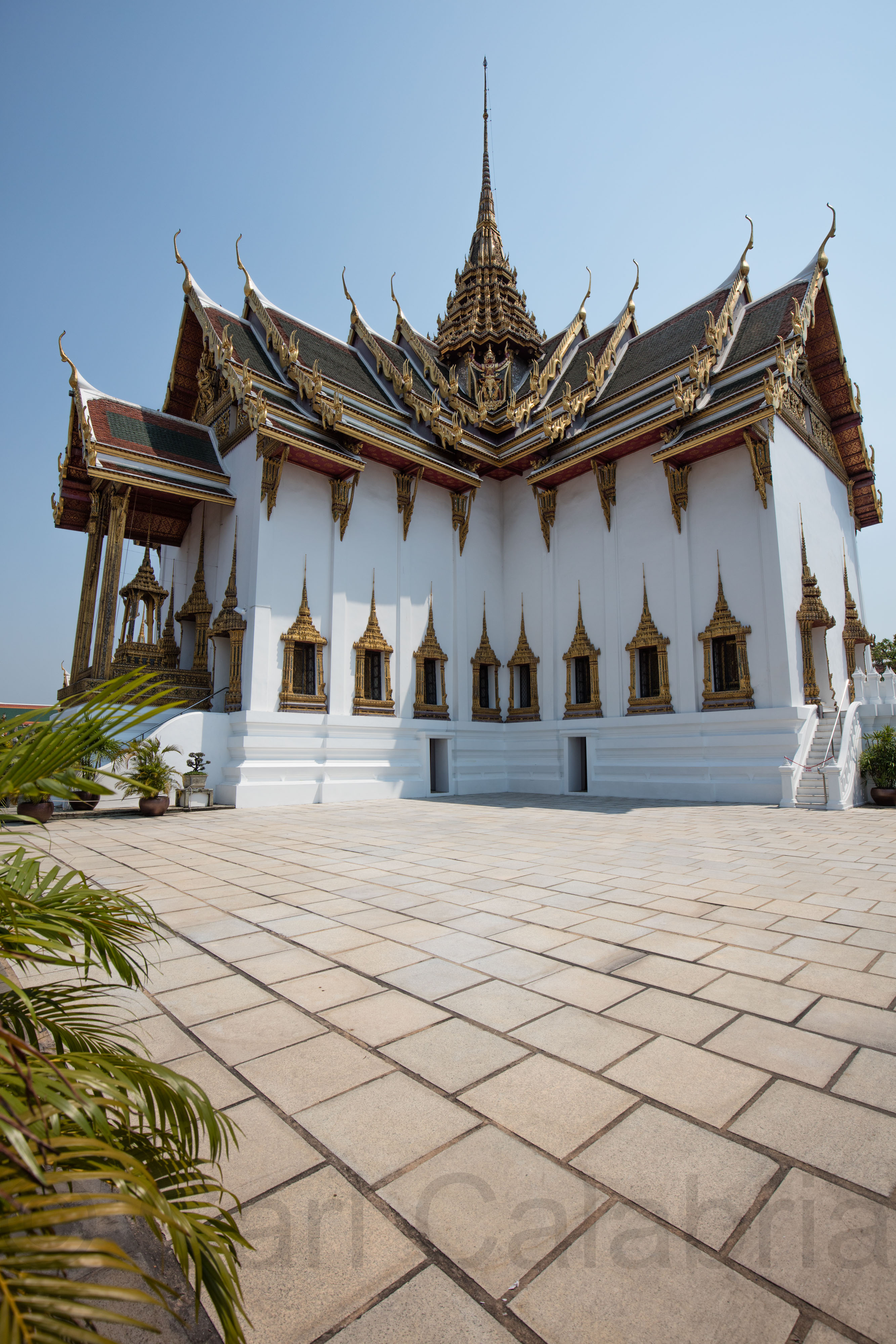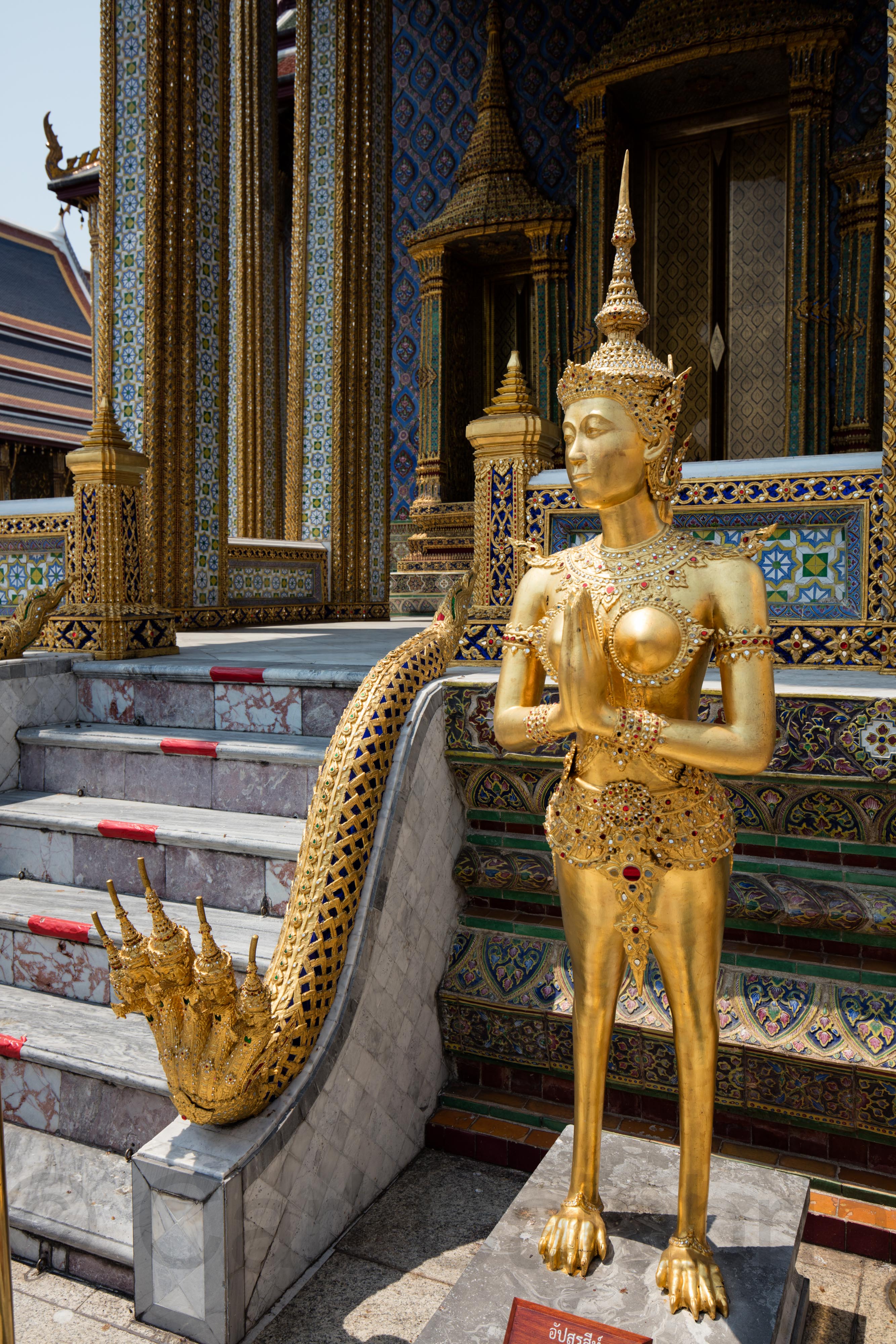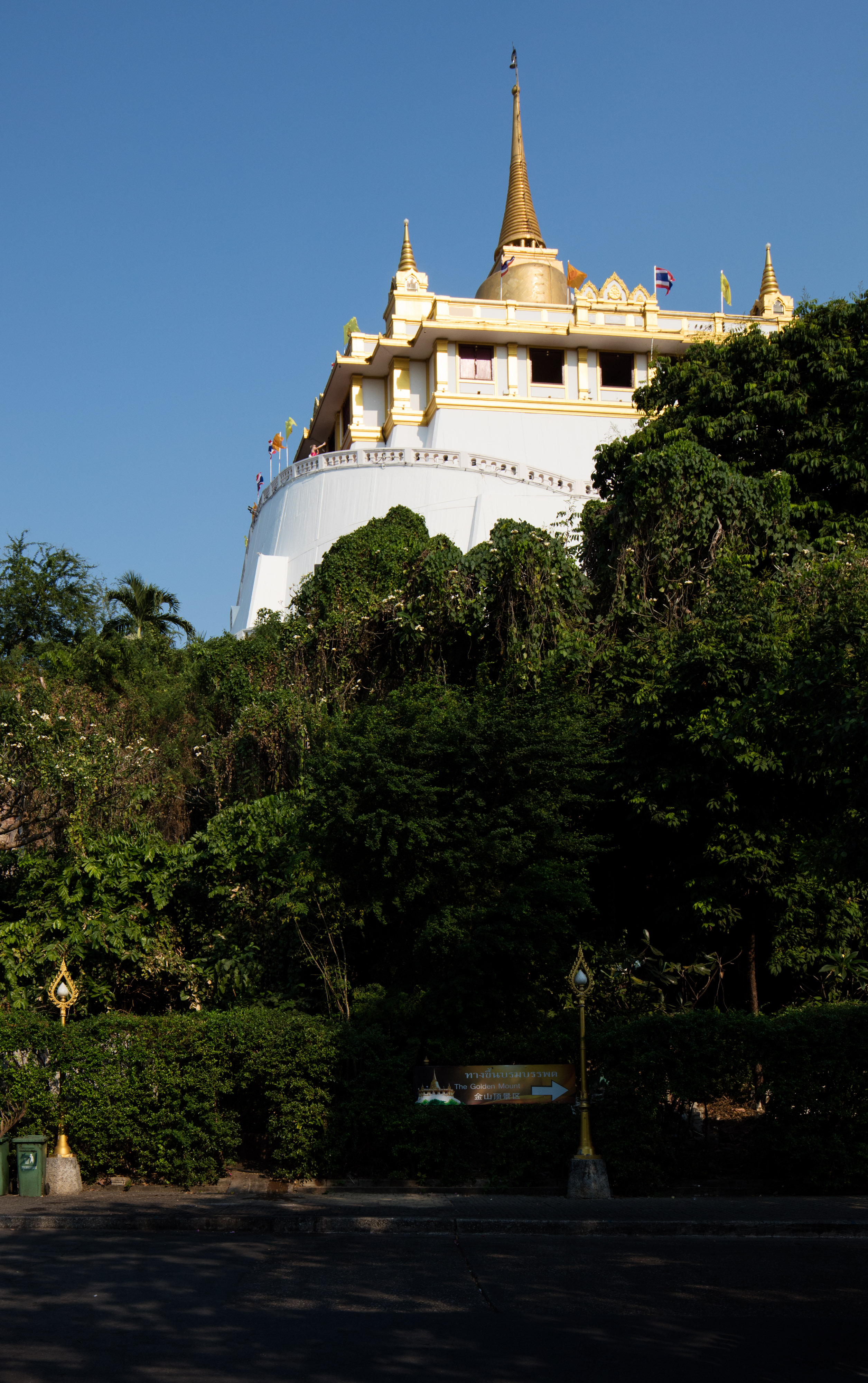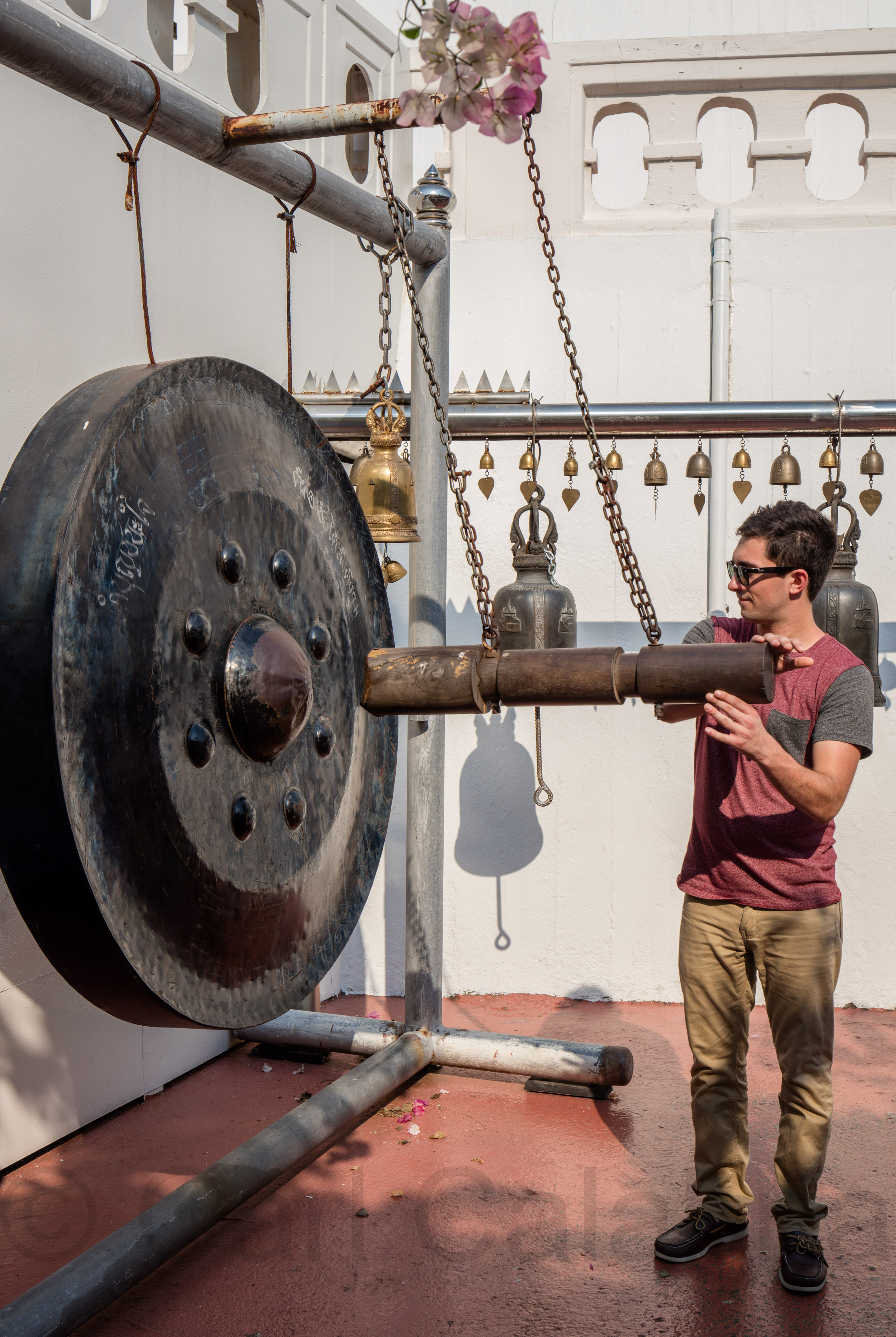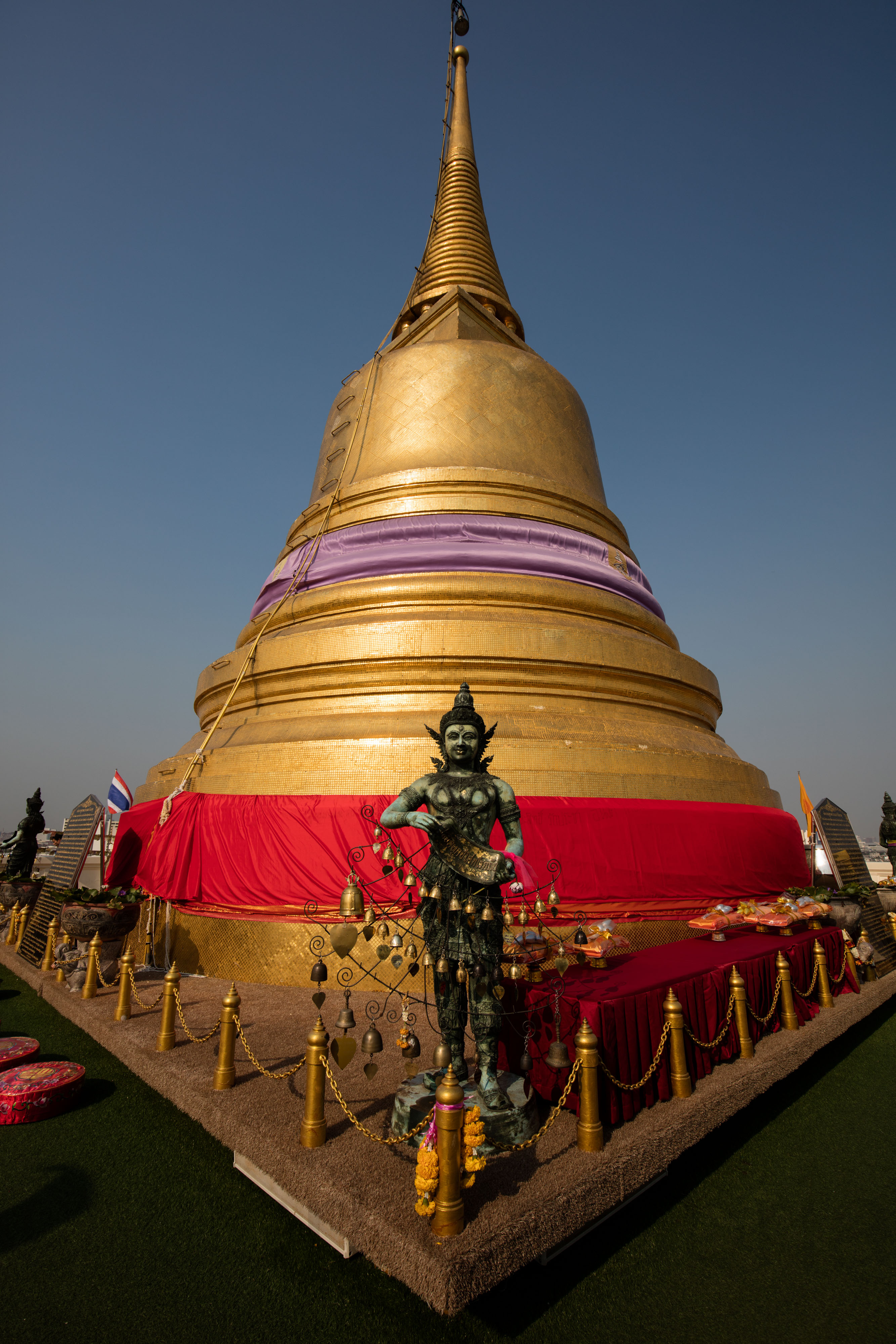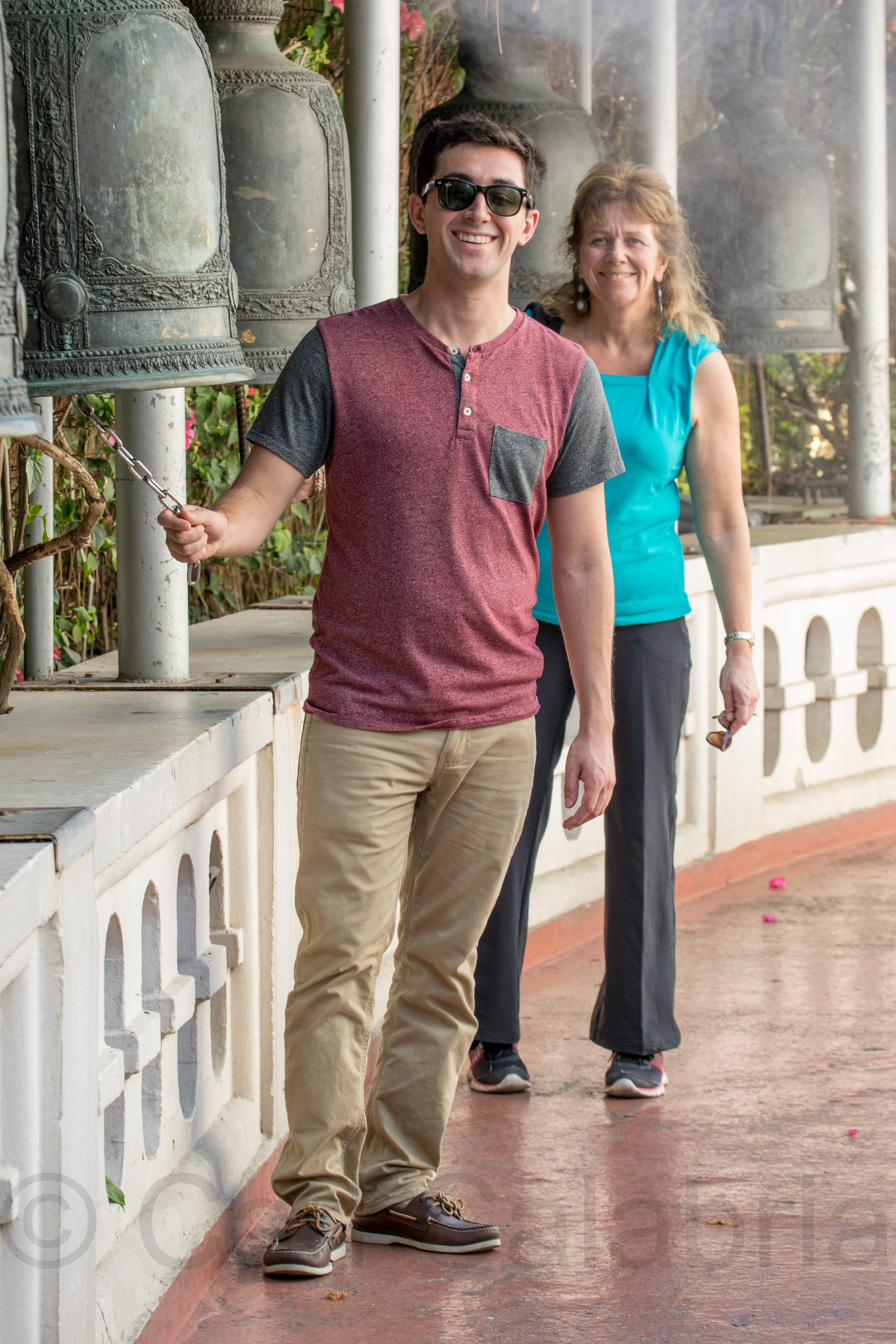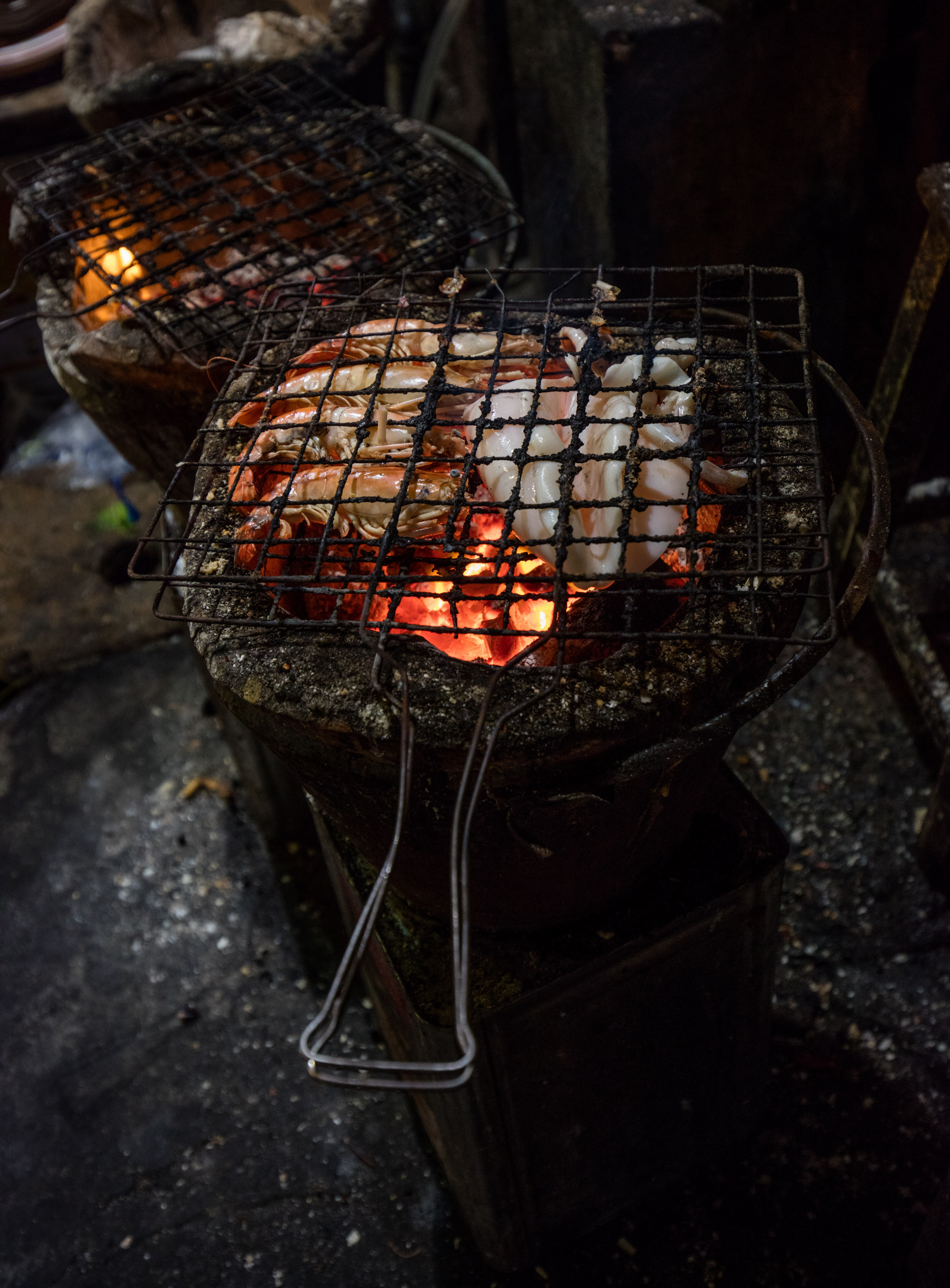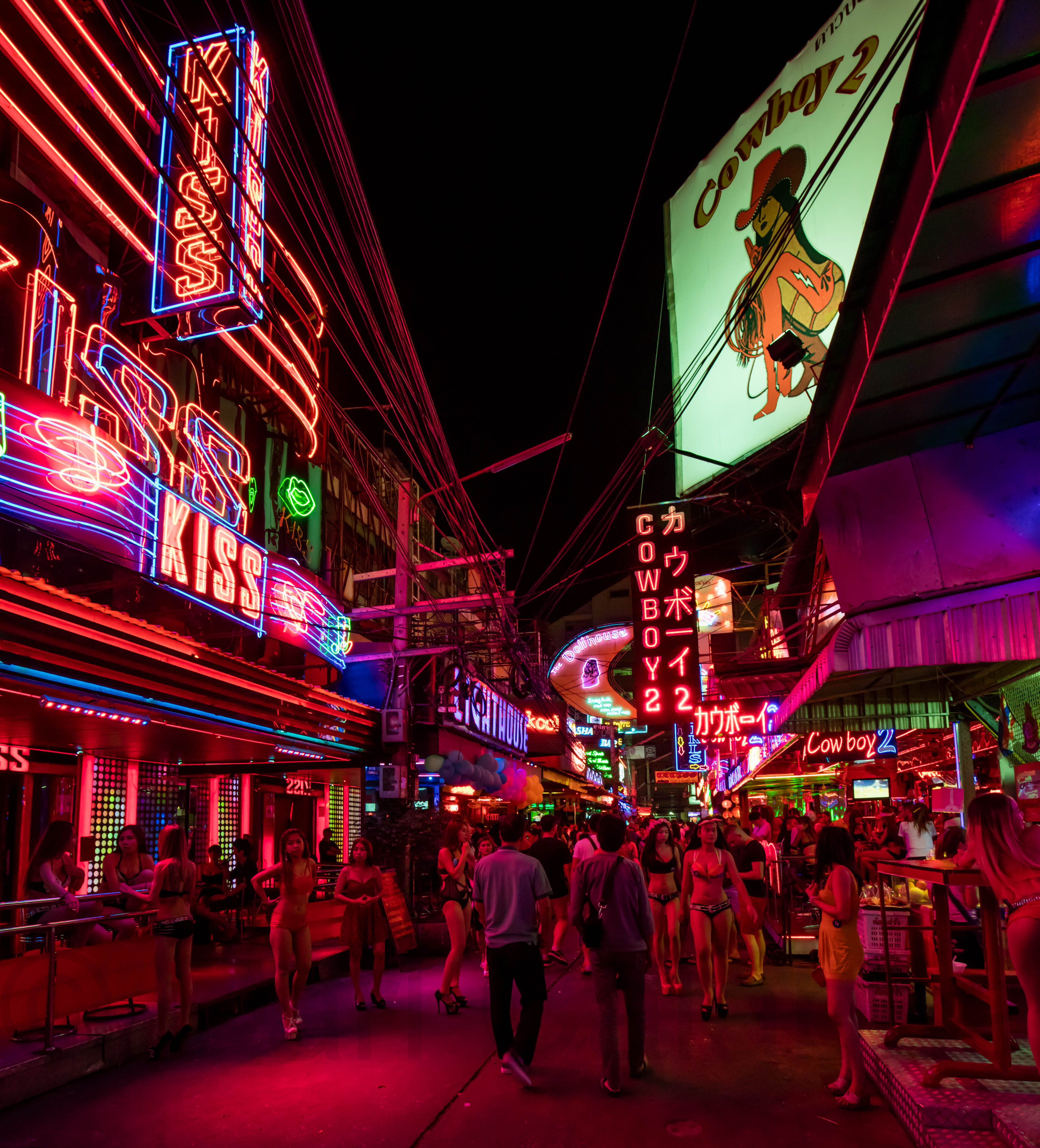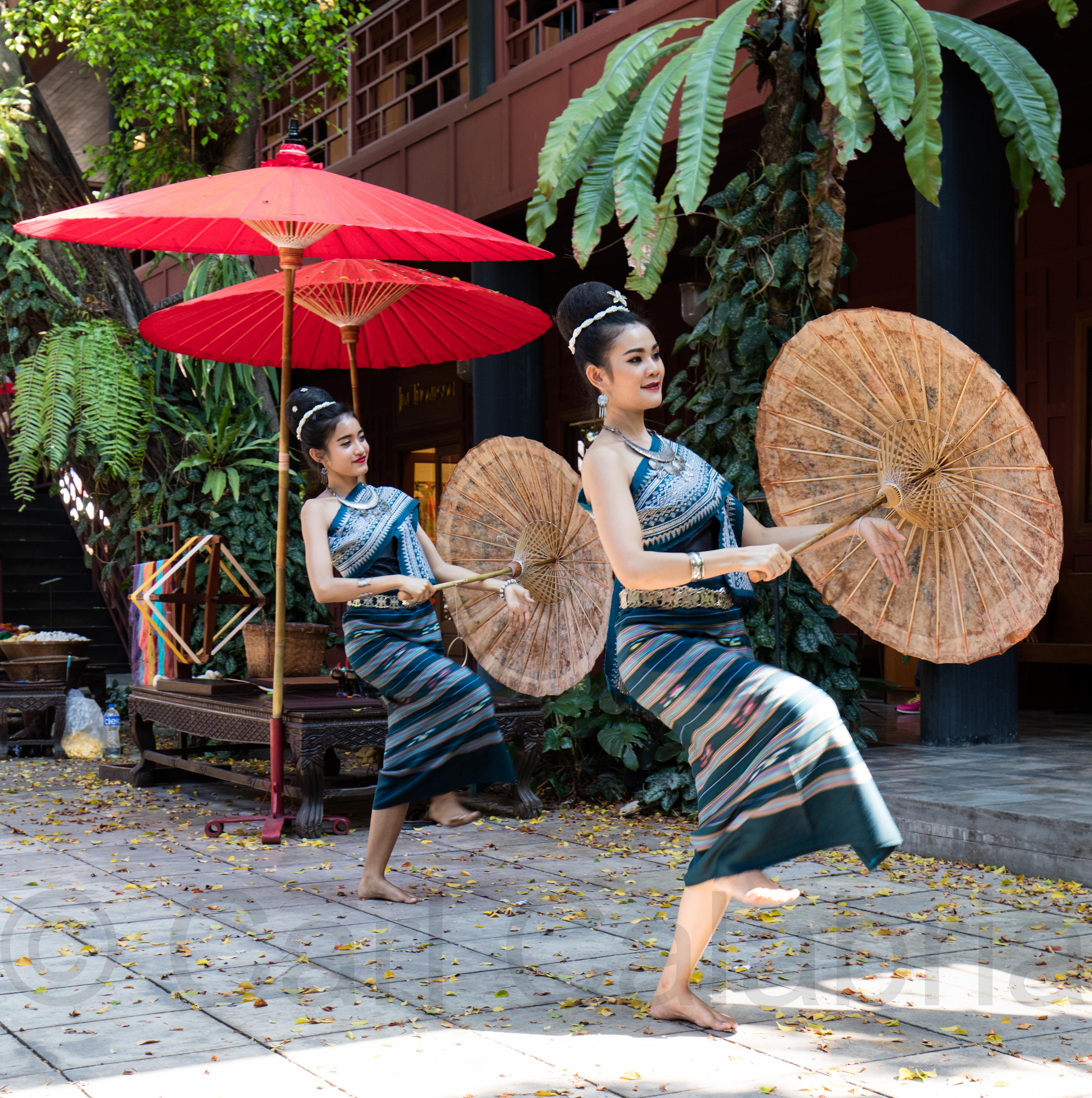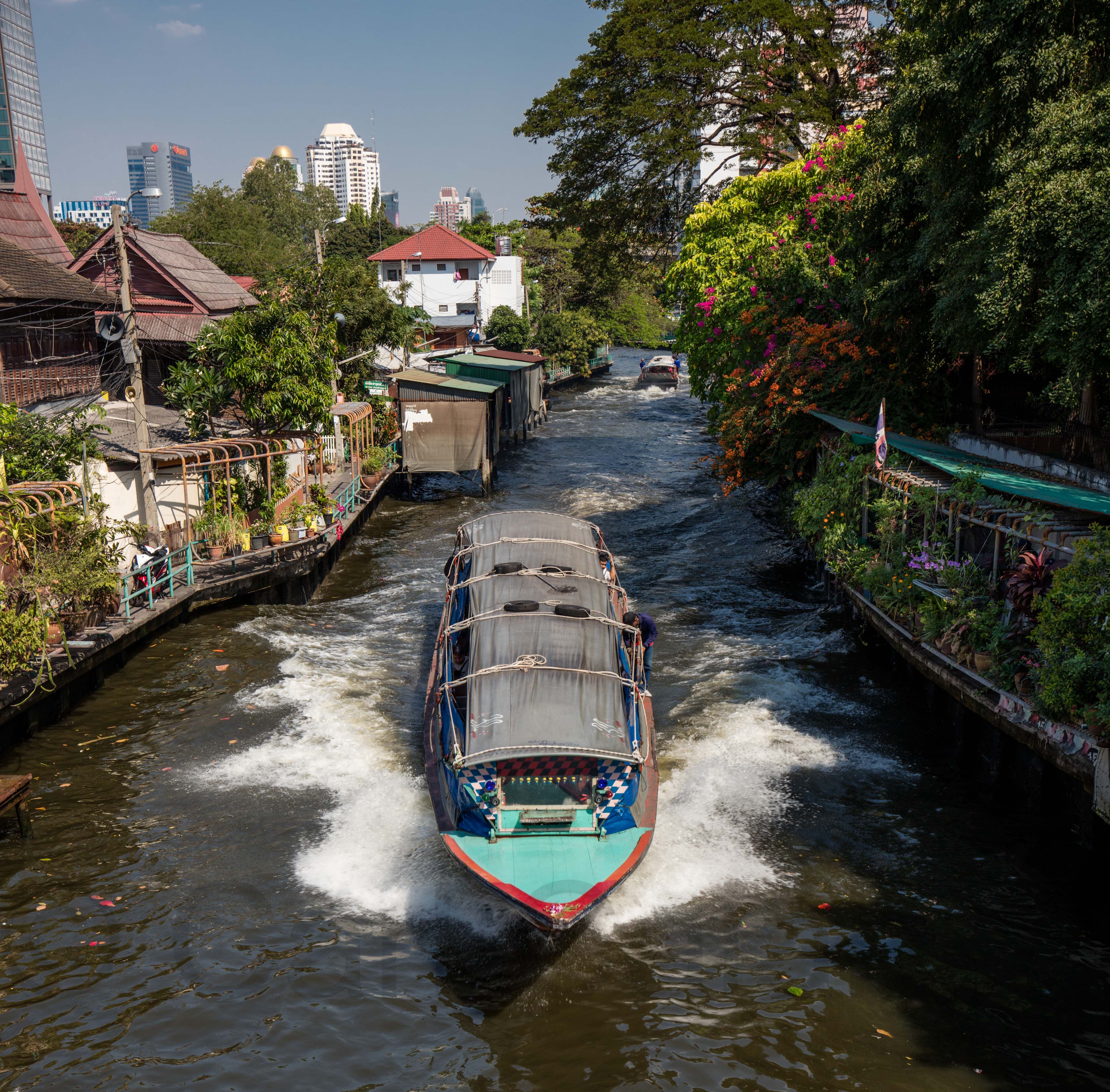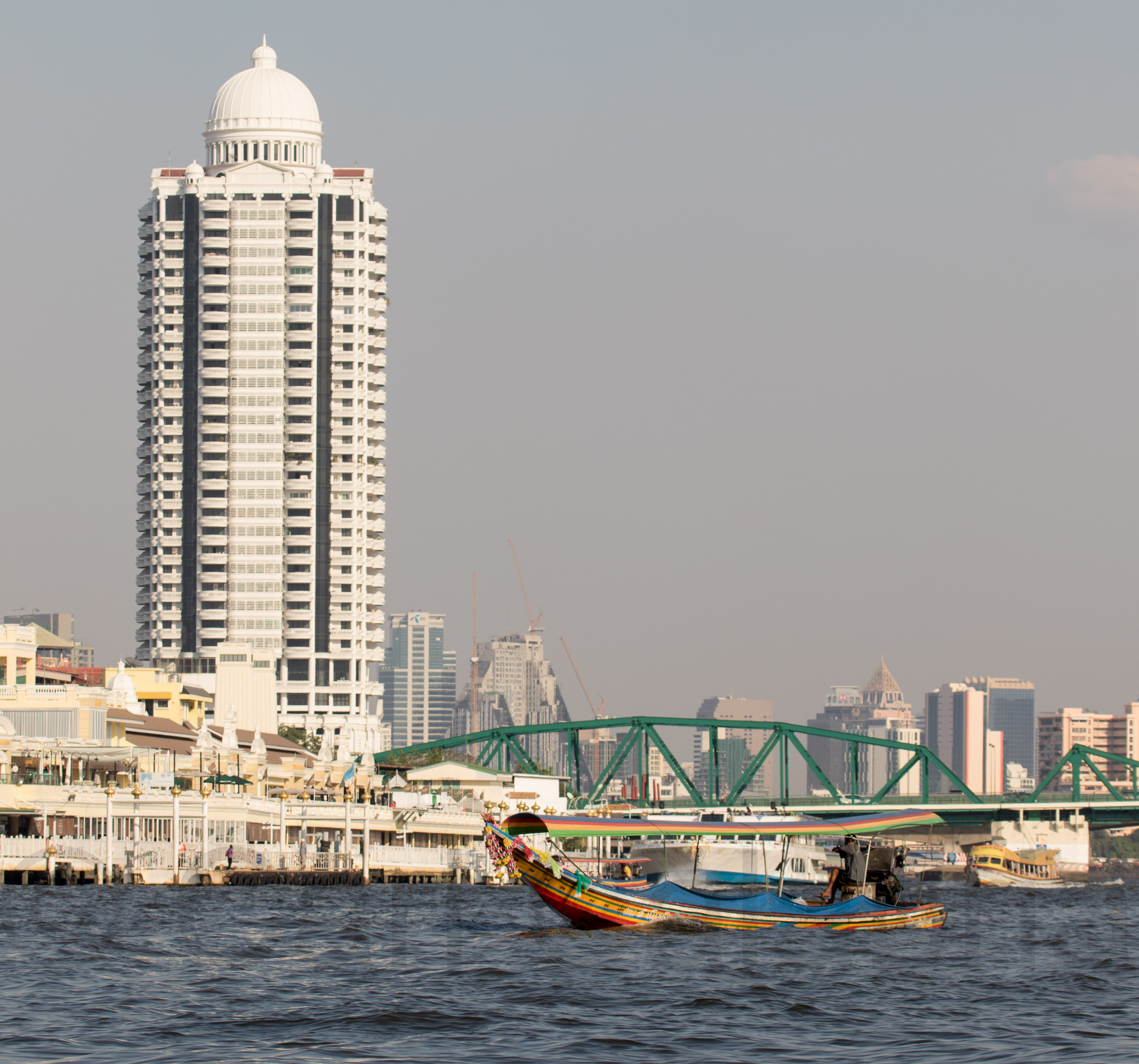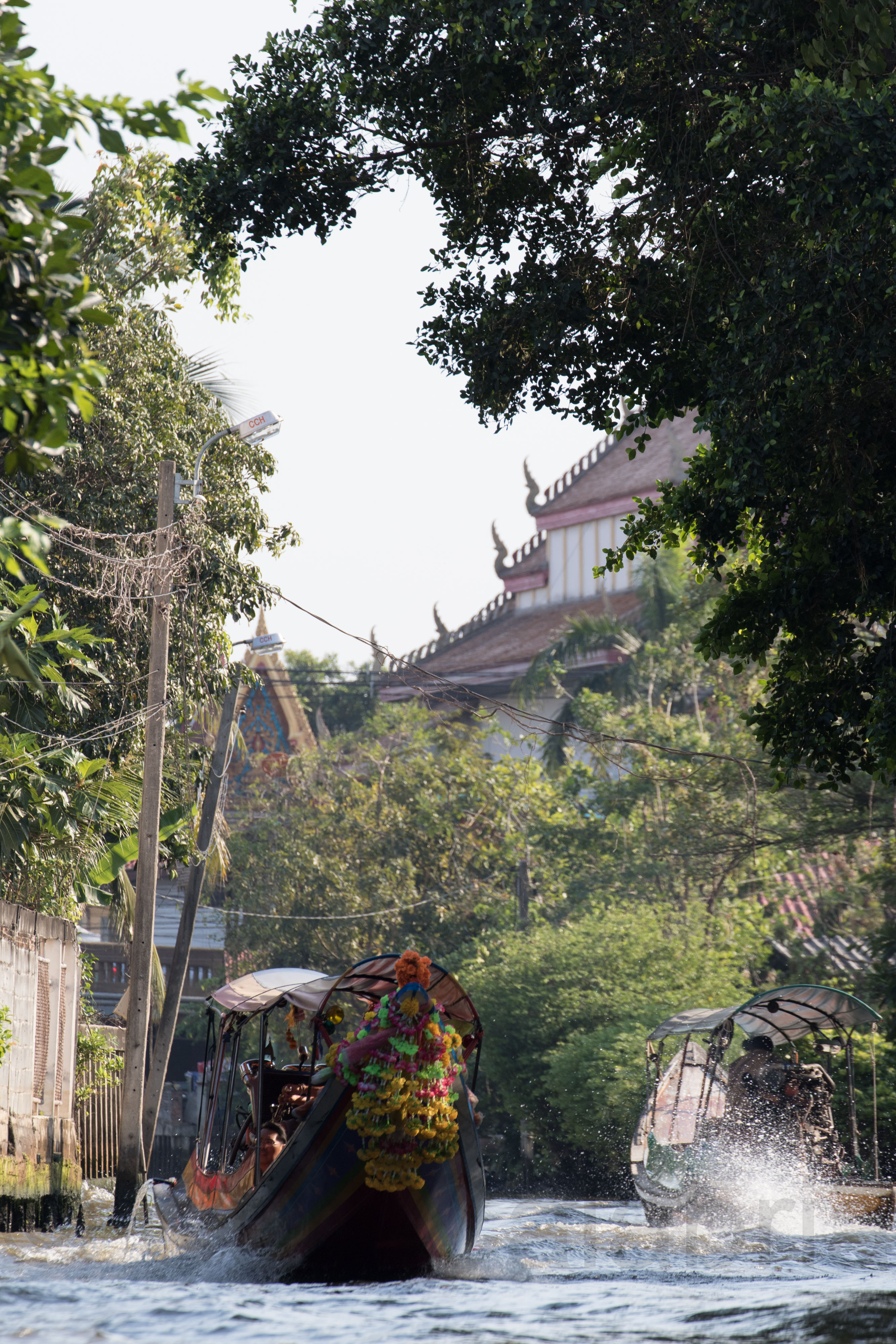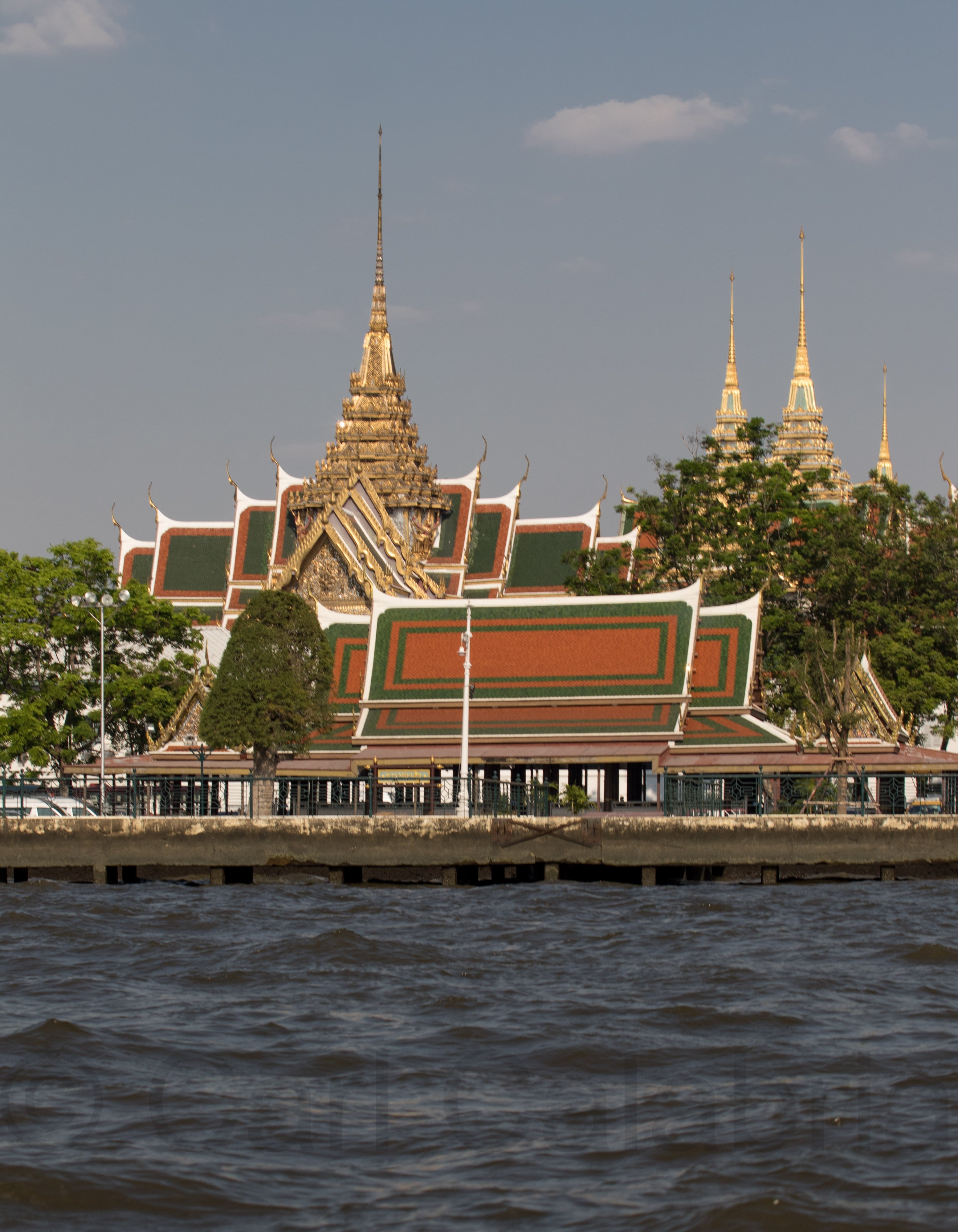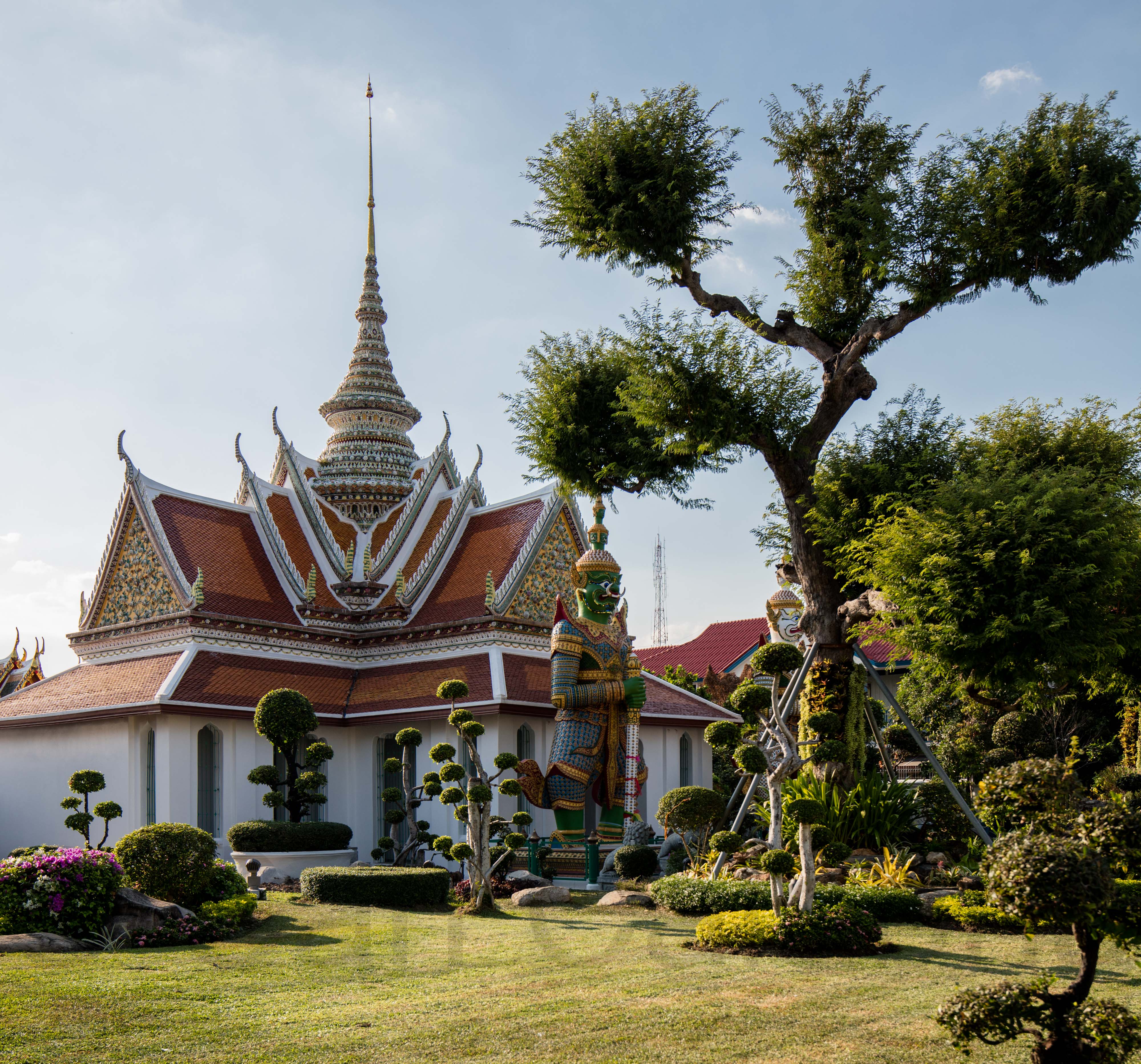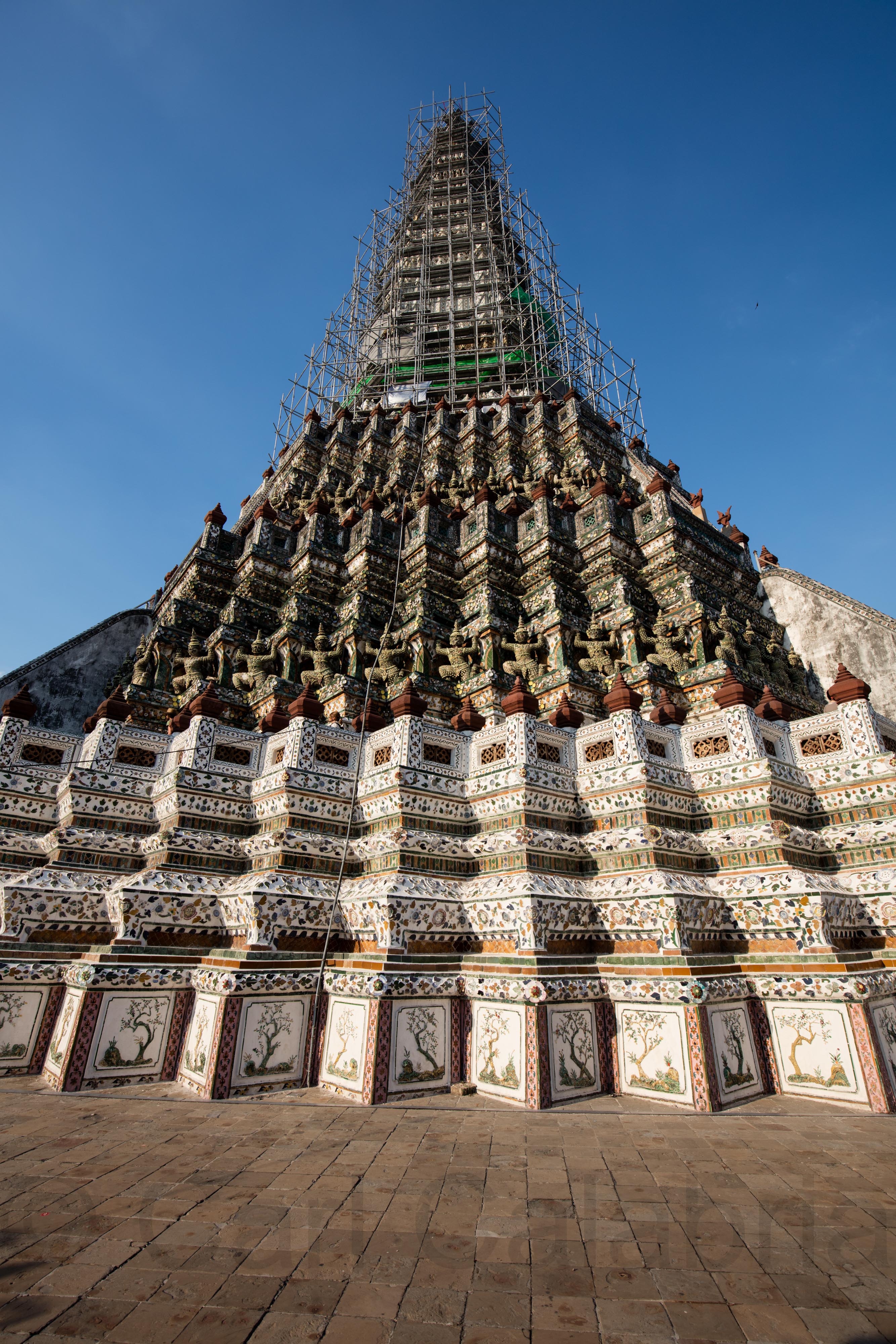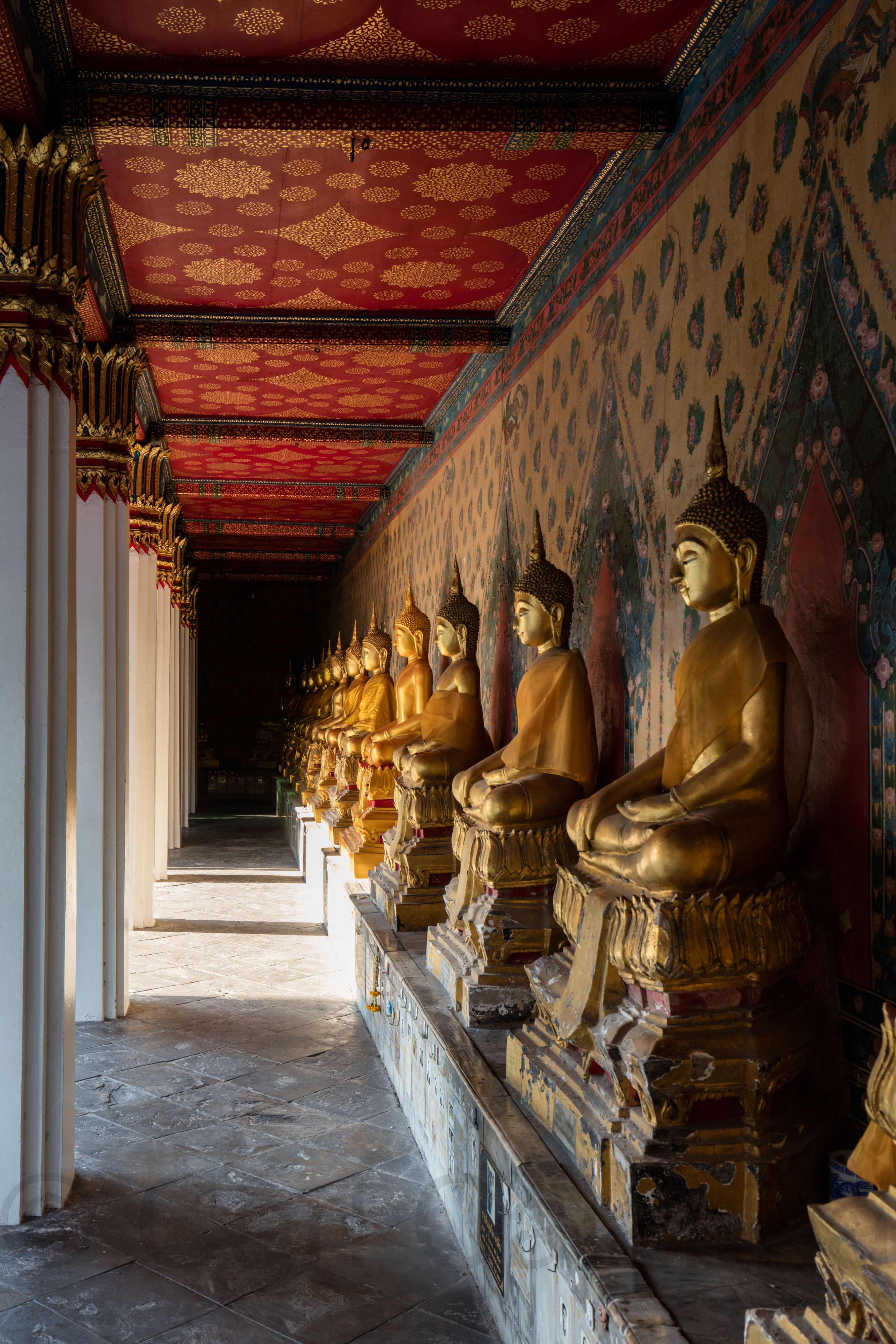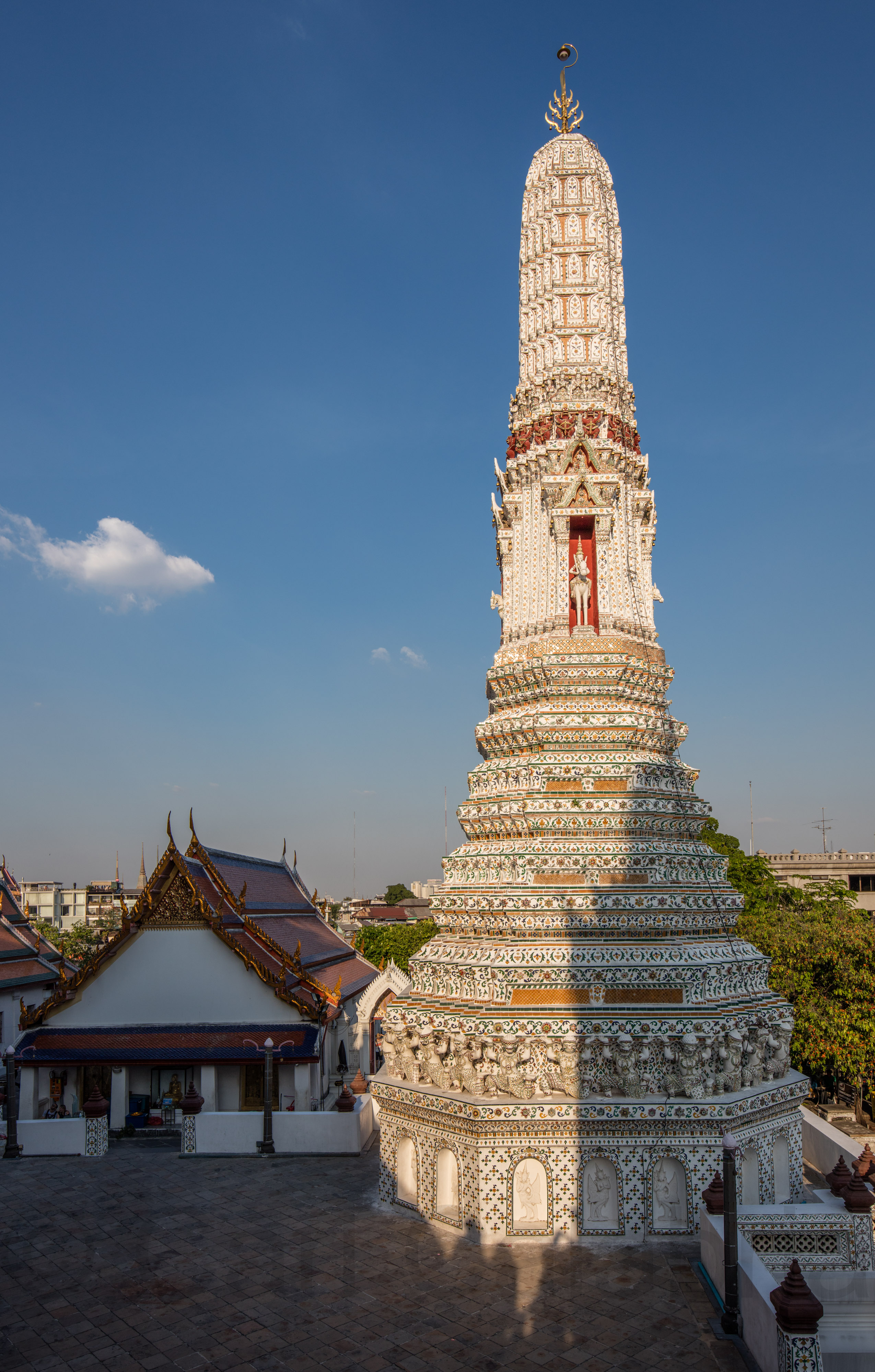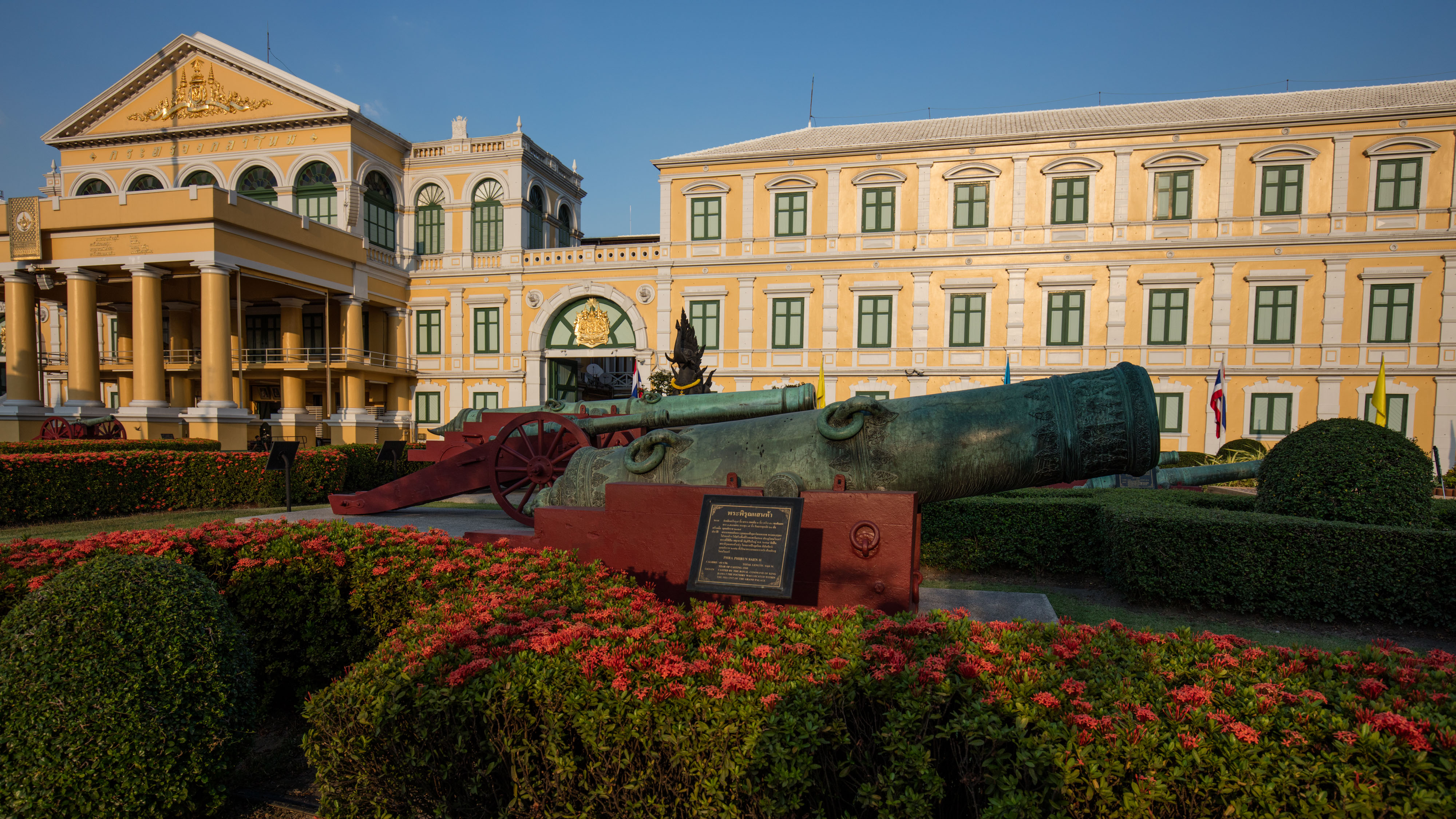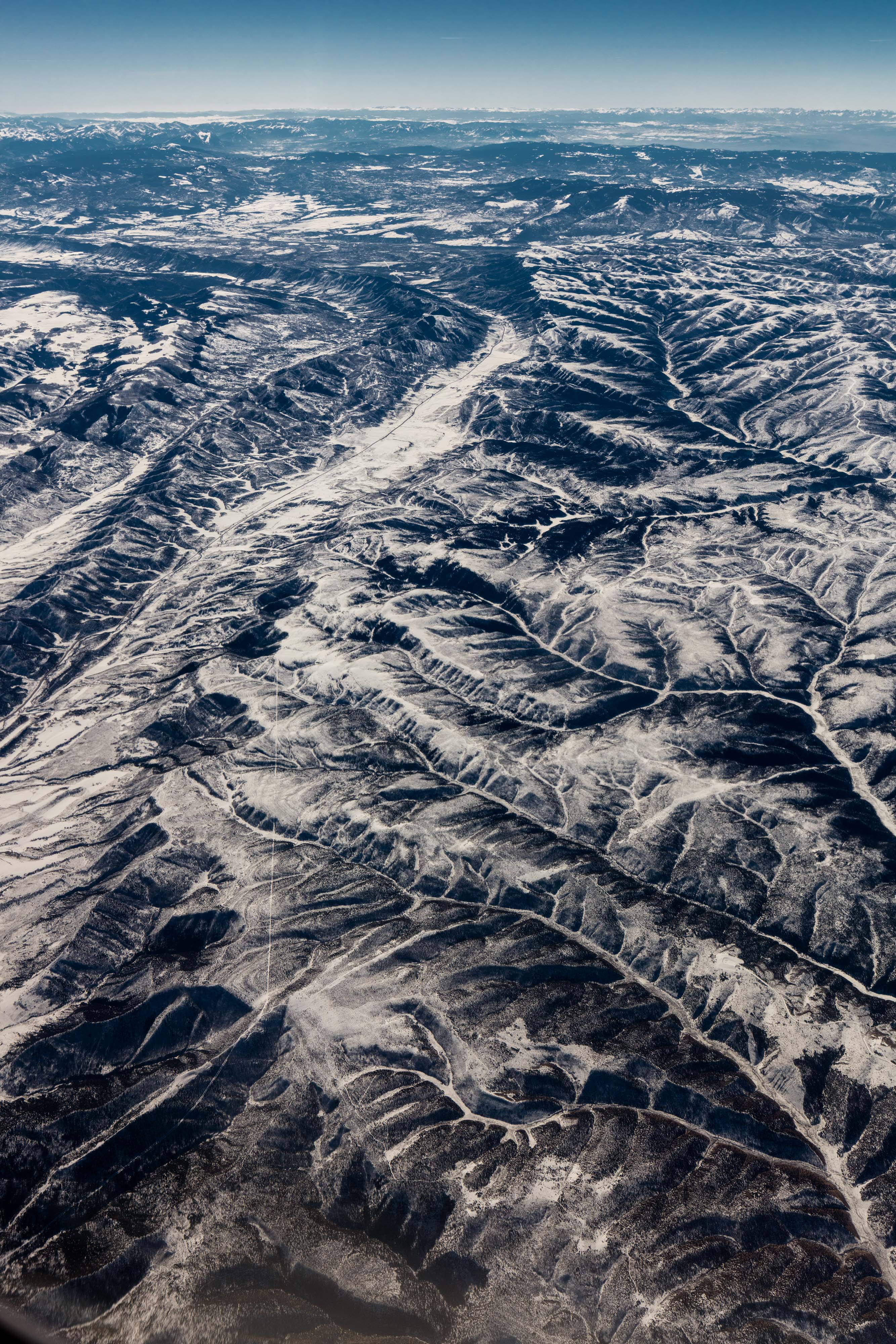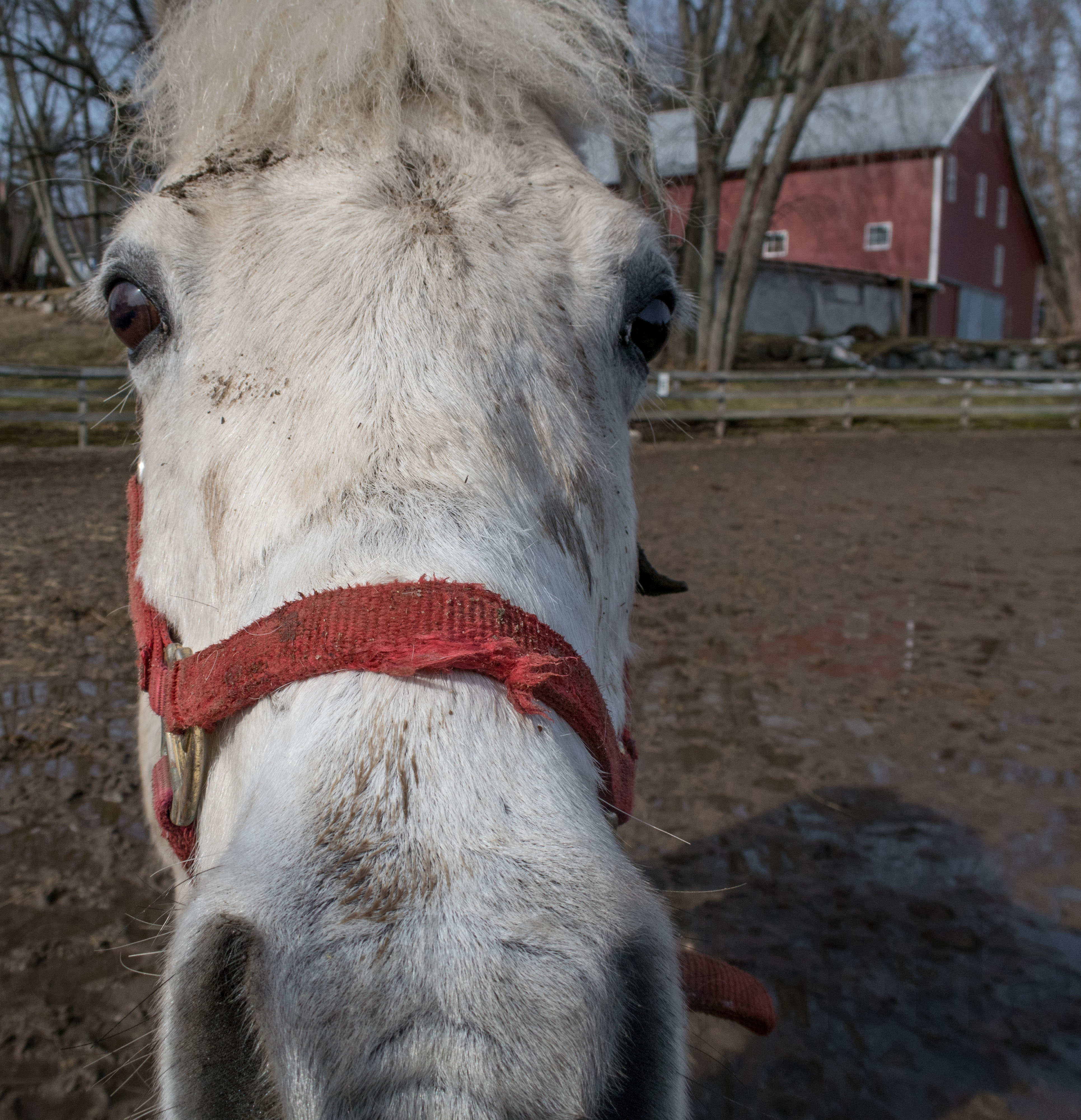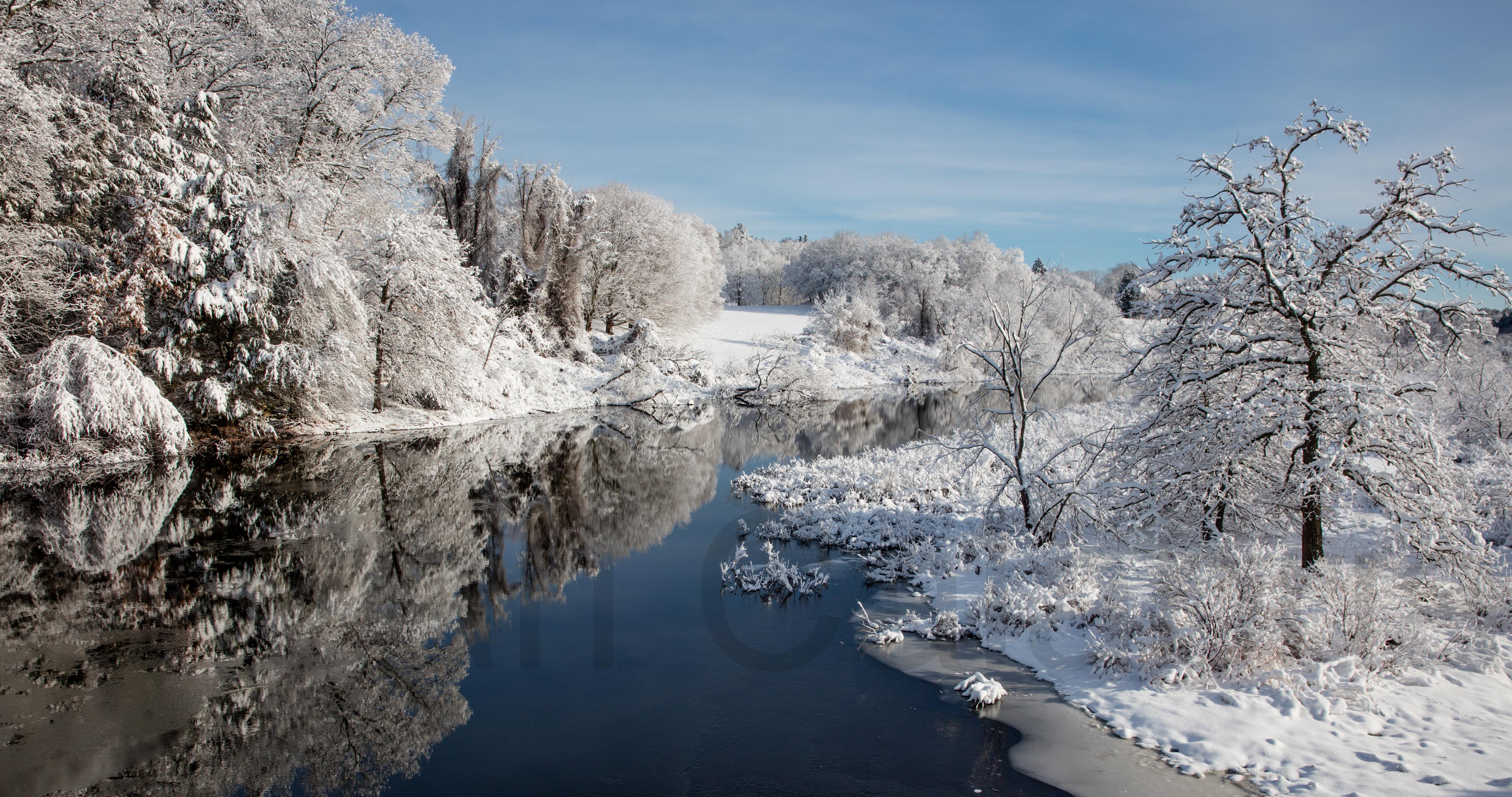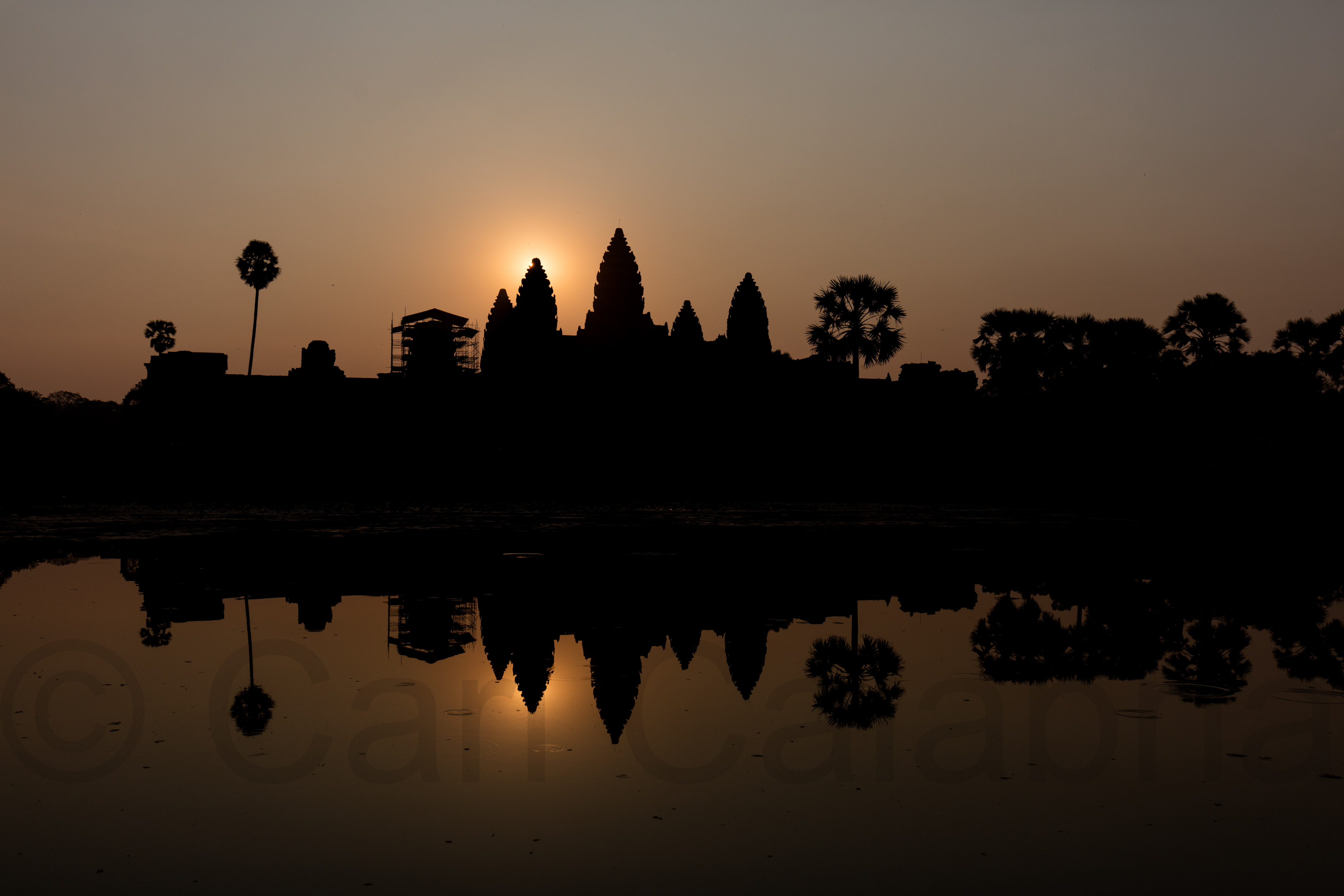
We arrived in Siem Reap last night and arranged for an early visit to Angkor Wat where I setup to capture the sunrise. The temples of Angkor, built by the Khmer civilization between 802 and 1220 AD, constitute the largest religious monument in the world, with the site measuring 400 acres. The structures one sees at Angkor today, more than 100 stone temples in all, are the surviving remains of a grand religious, social and administrative metropolis whose other buildings – palaces, public buildings, and houses – were built of wood and have long since decayed and disappeared.
At any given time of day, hundreds of the thousands of daily visitors can be found taking the iconic picture of the temple with its reflection in one of two ponds.
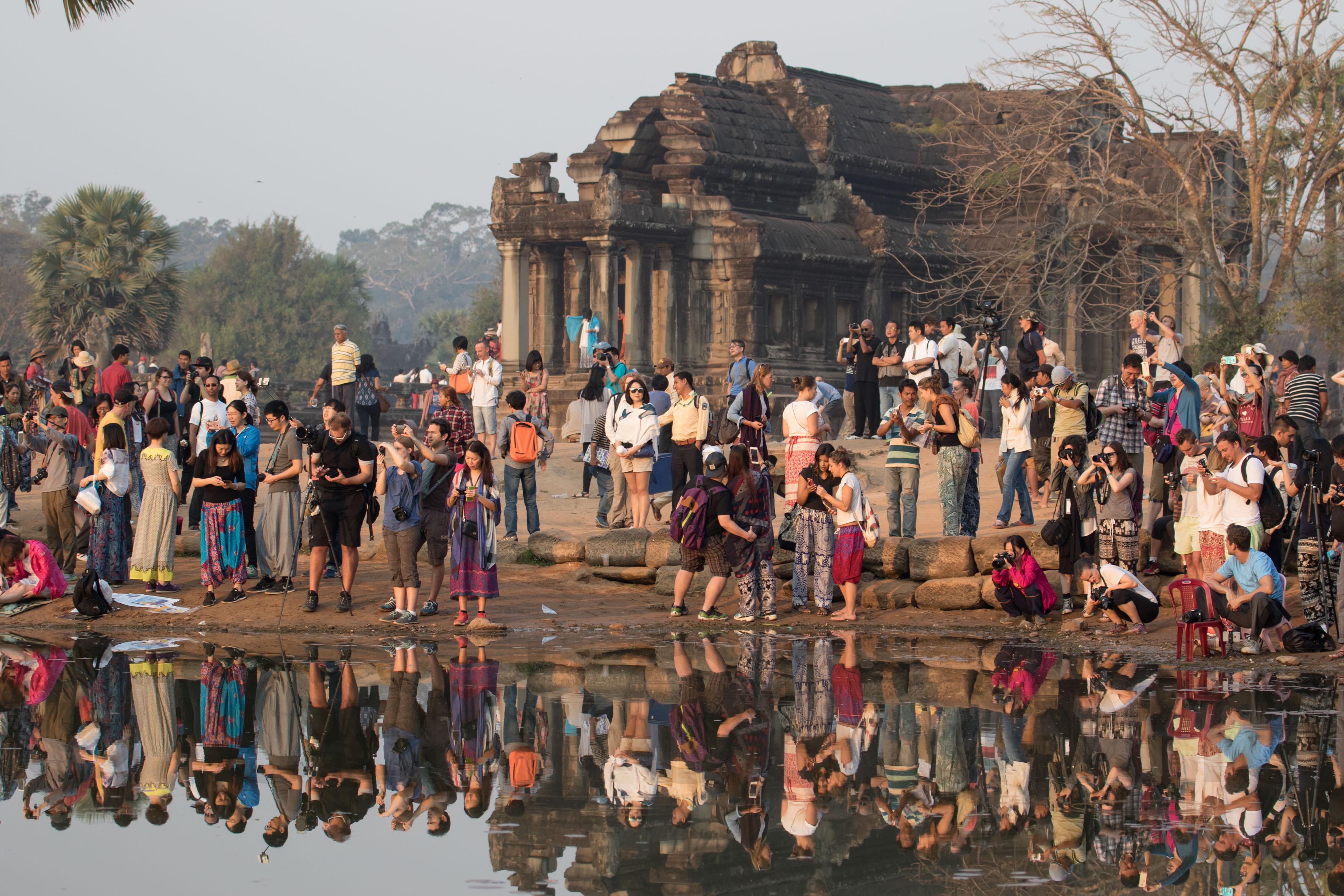
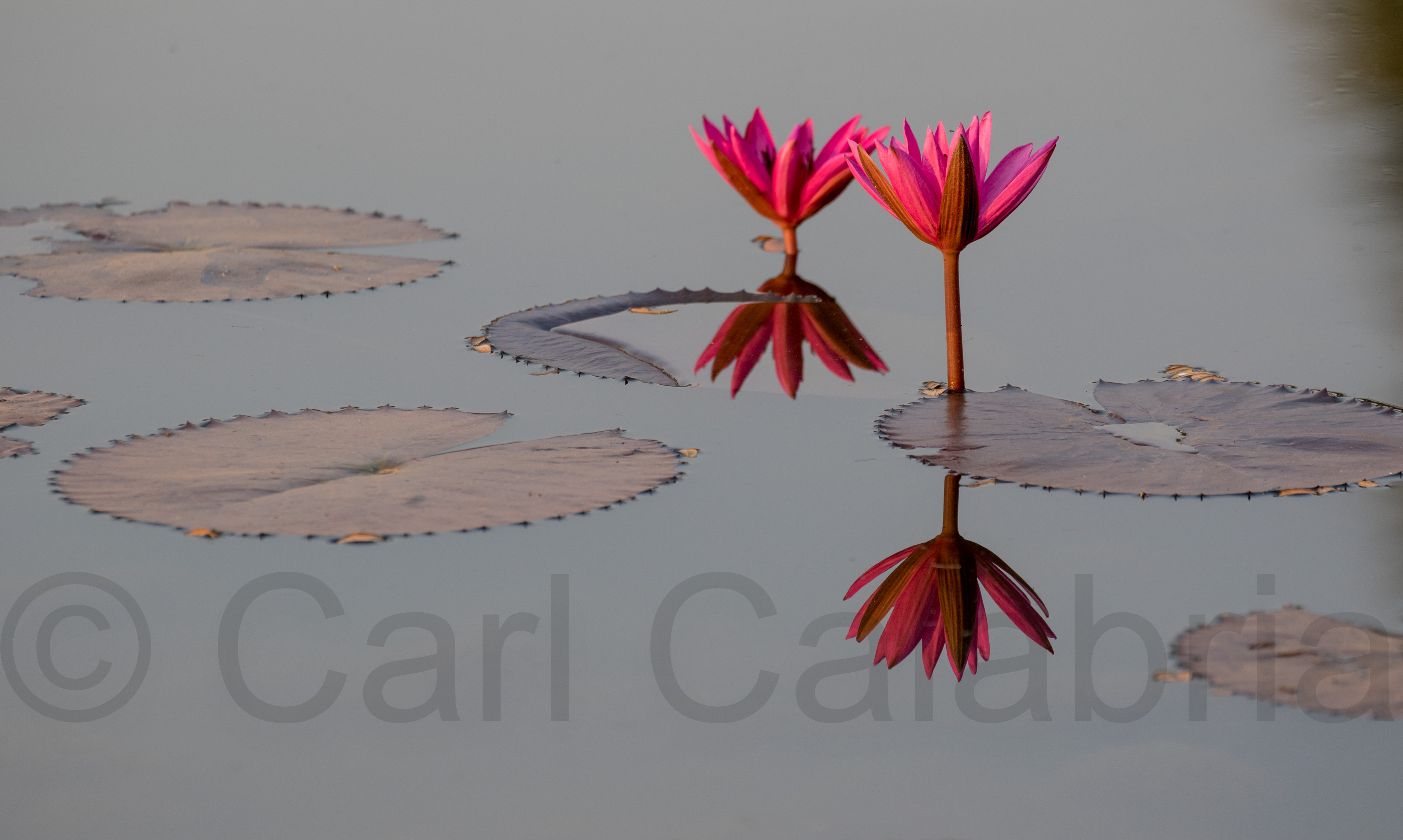
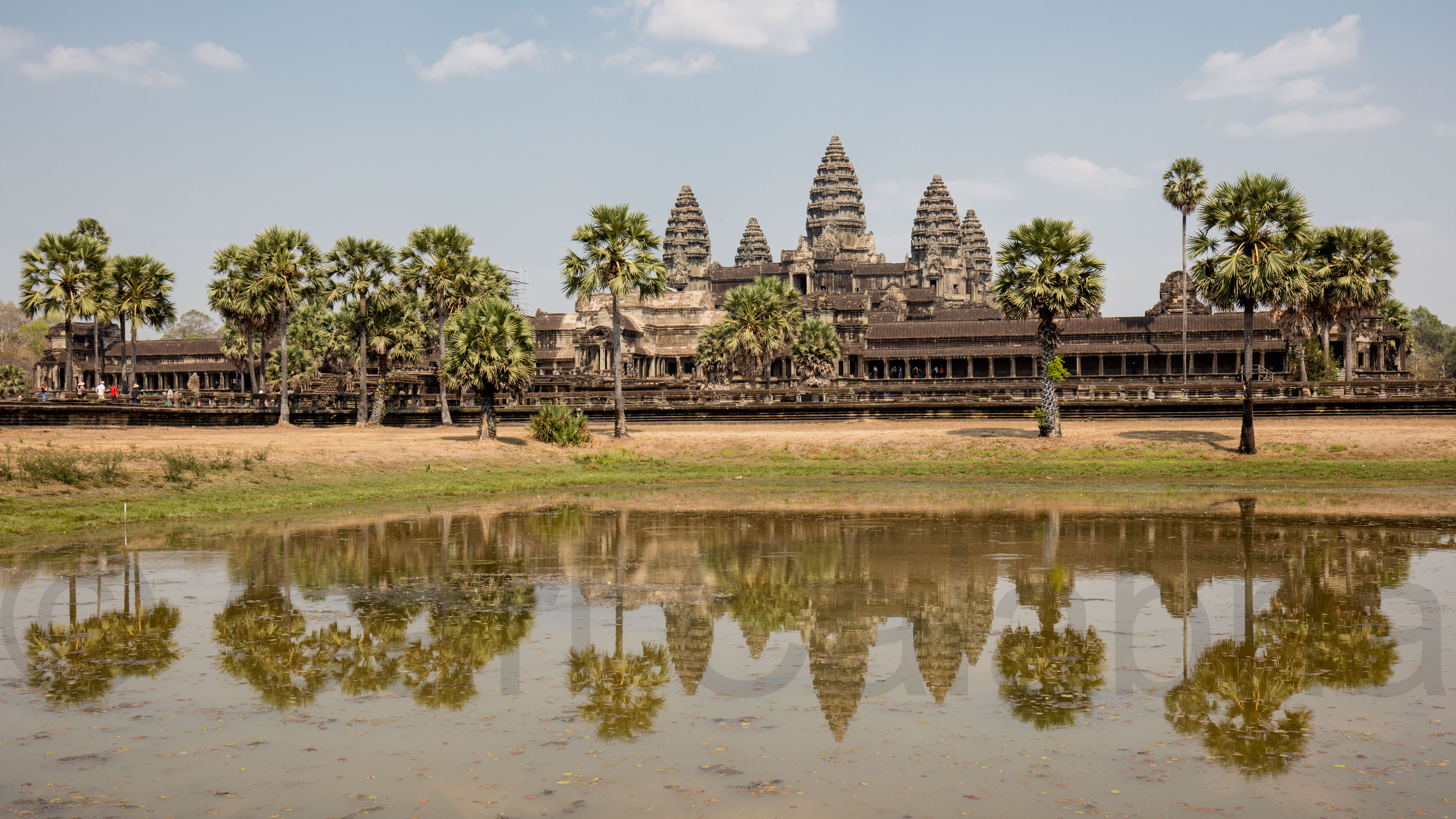
I normally take great pains to exclude tourists from my photographs and arriving early in the day is the best formula for success but does constrain which views will be best lit. I also tend to shy away from selfies but am not immune to taking a few.
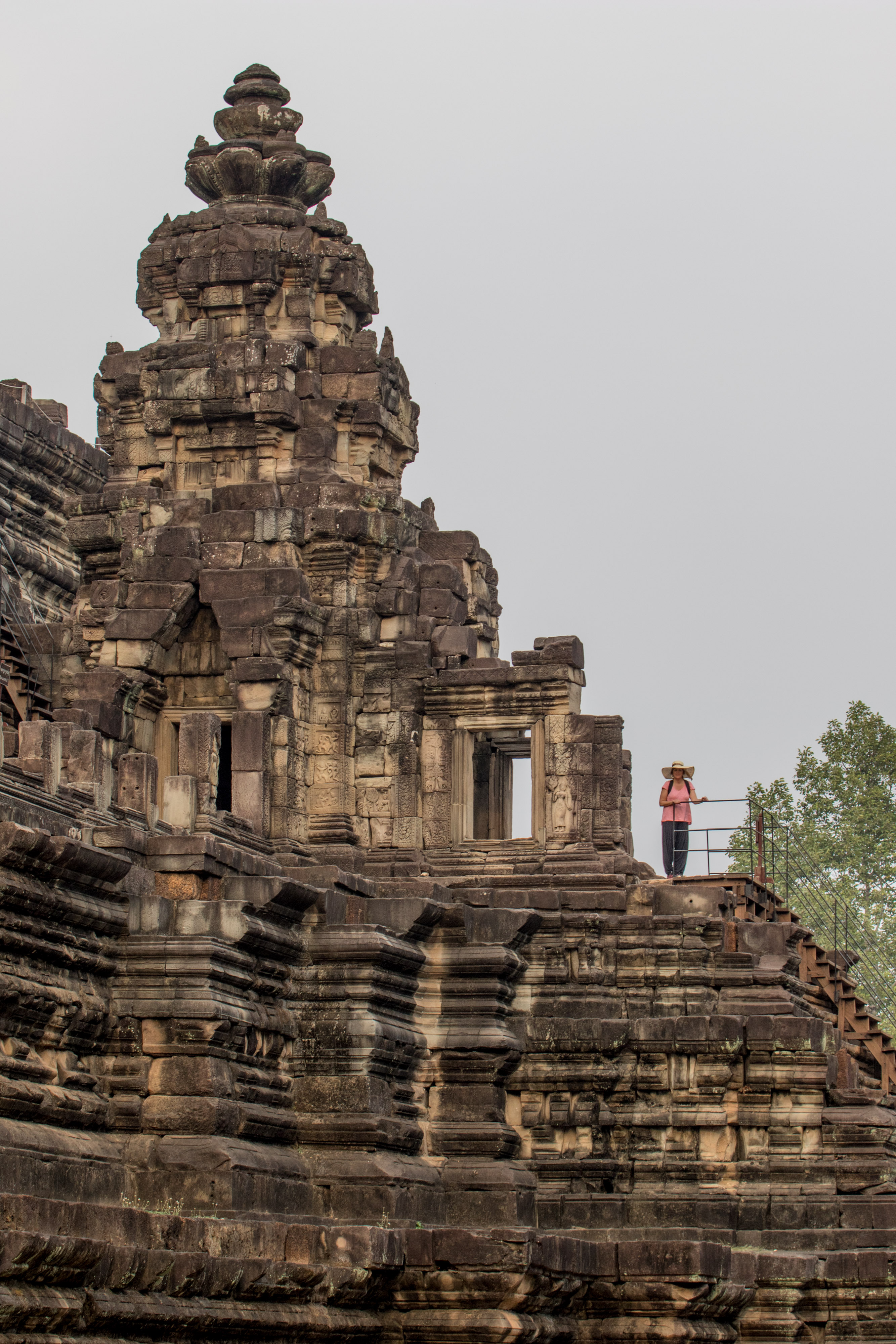
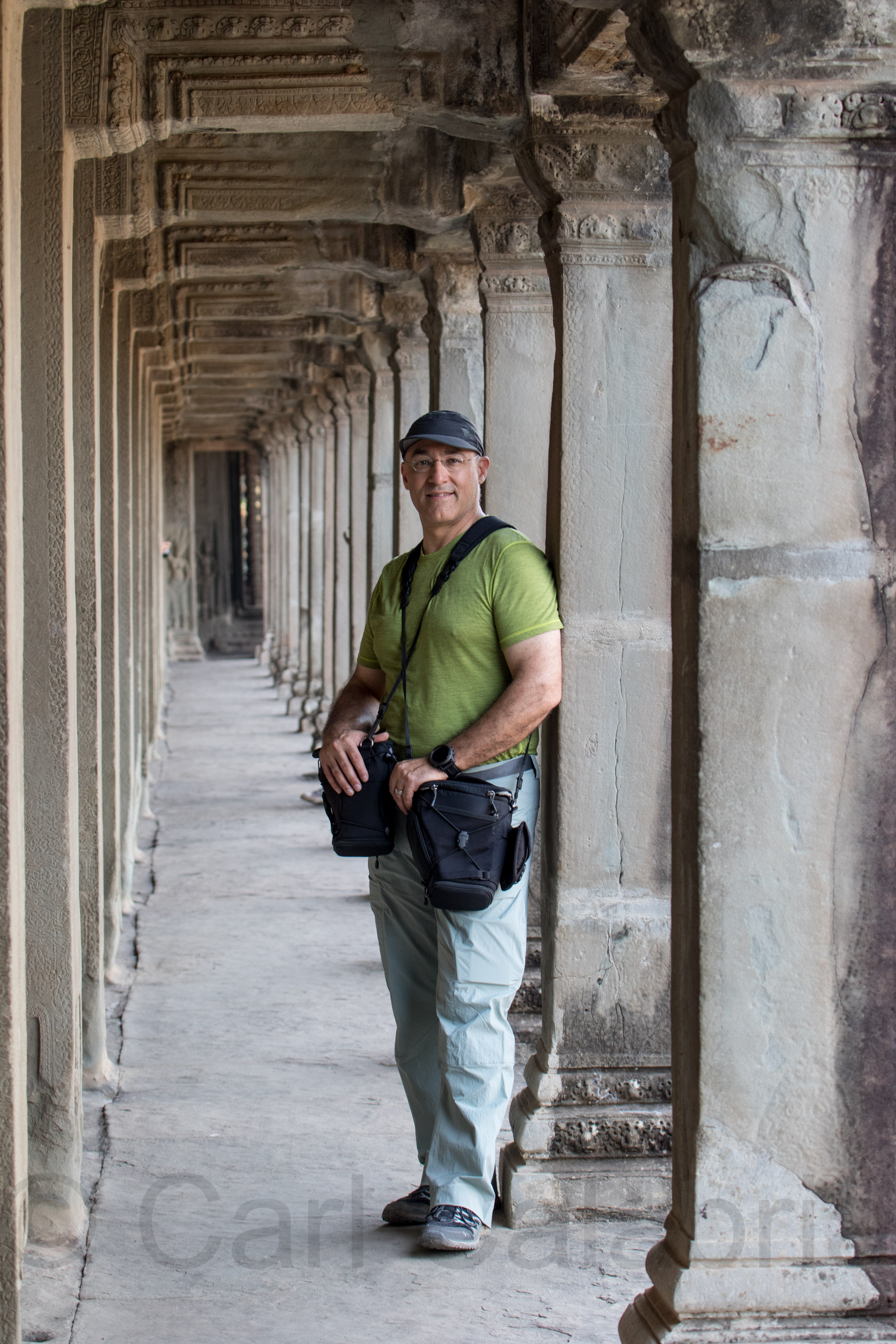
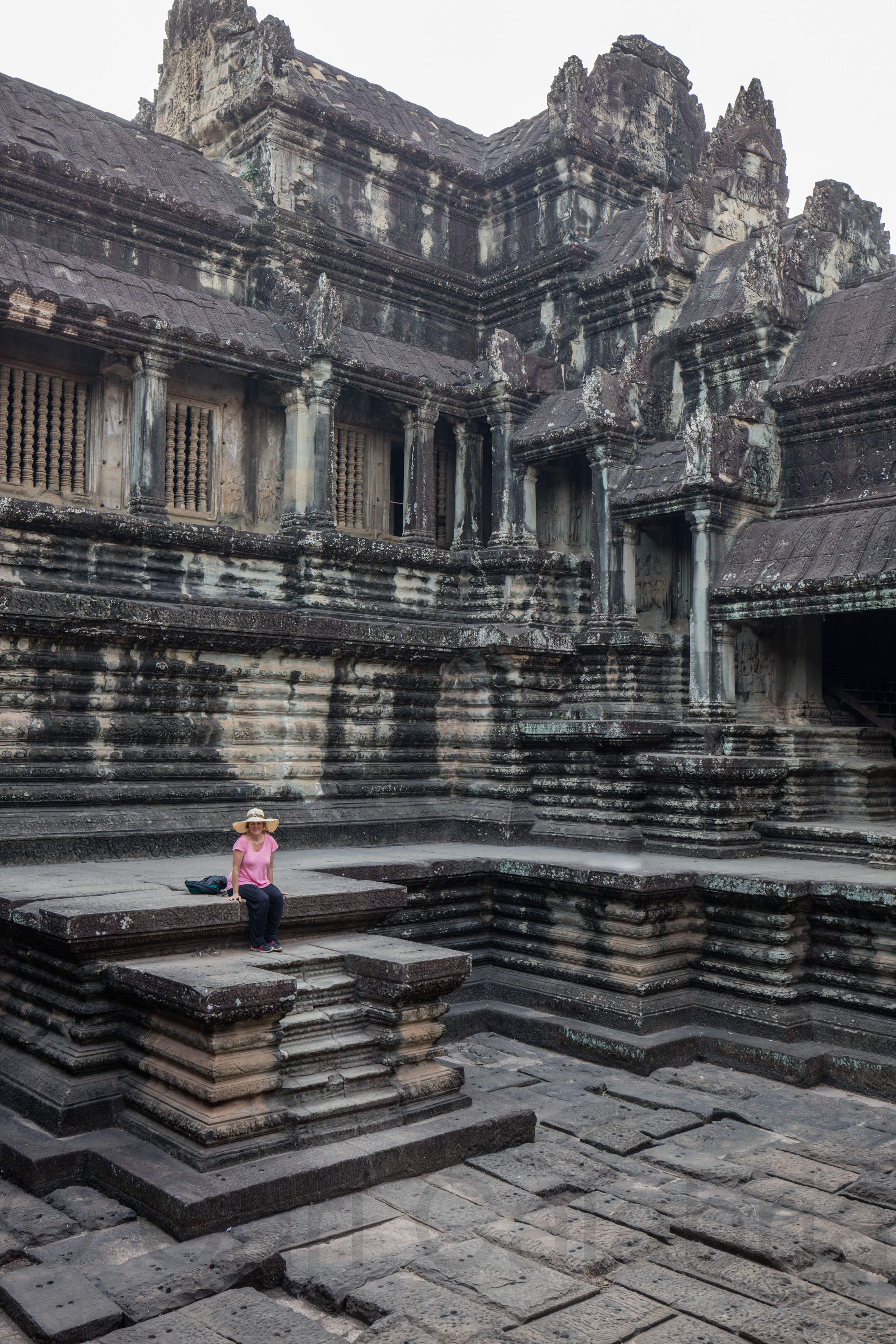
Monks make for great photographic elements and I was constantly on the lookout for opportunities to include them in my photographs.
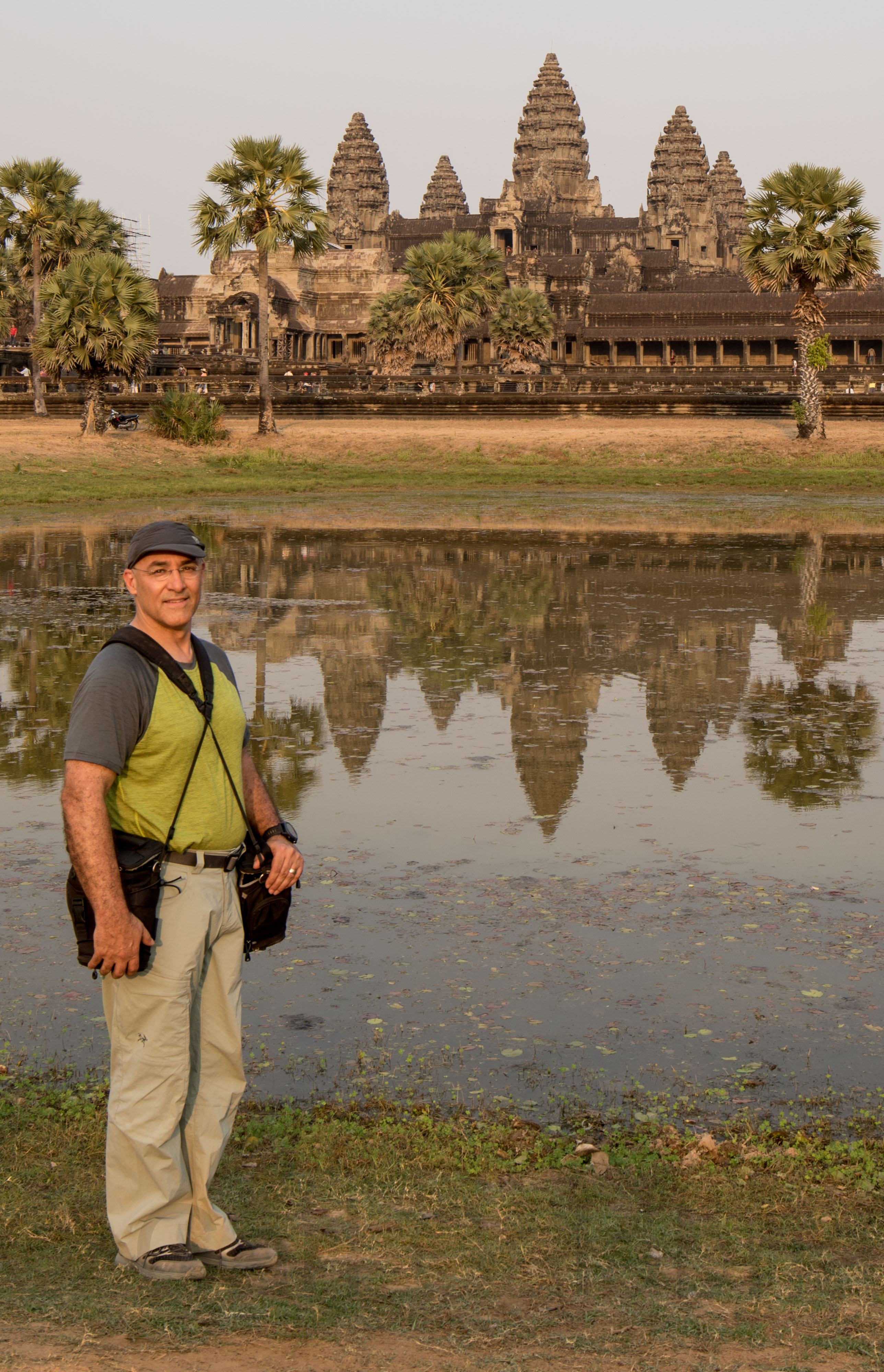
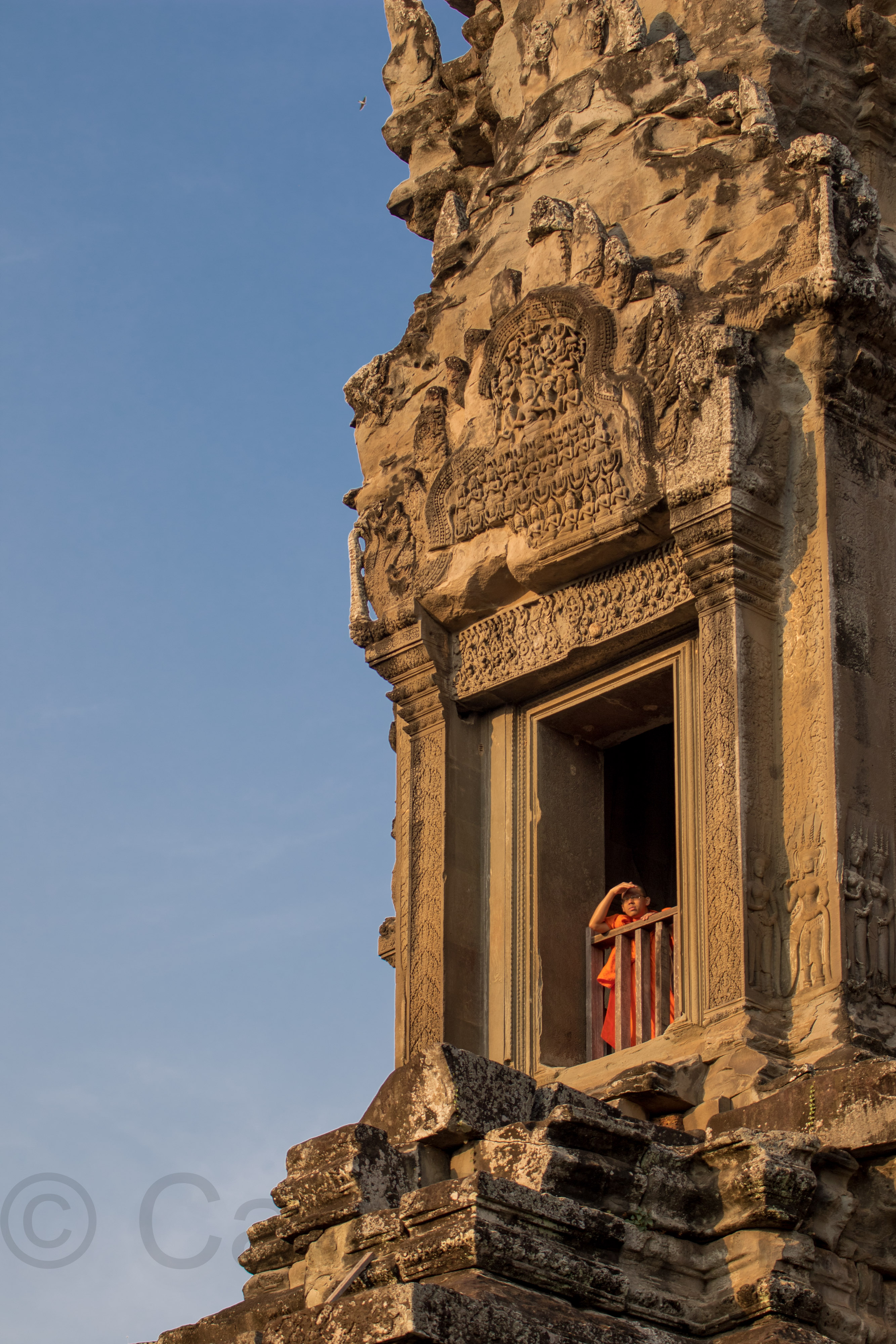
Unlike other temples at Angkor, Ta Prohm has been left as it was found, preserved as an example of what a tropical forest will do to an architectural monument when the protective hands of humans are withdrawn. Ta Prohm’s walls, roofs, chambers and courtyards have been sufficiently repaired to stop further deterioration, and the inner sanctuary has been cleared of bushes and thick undergrowth, but the temple has been left in the stranglehold of trees.
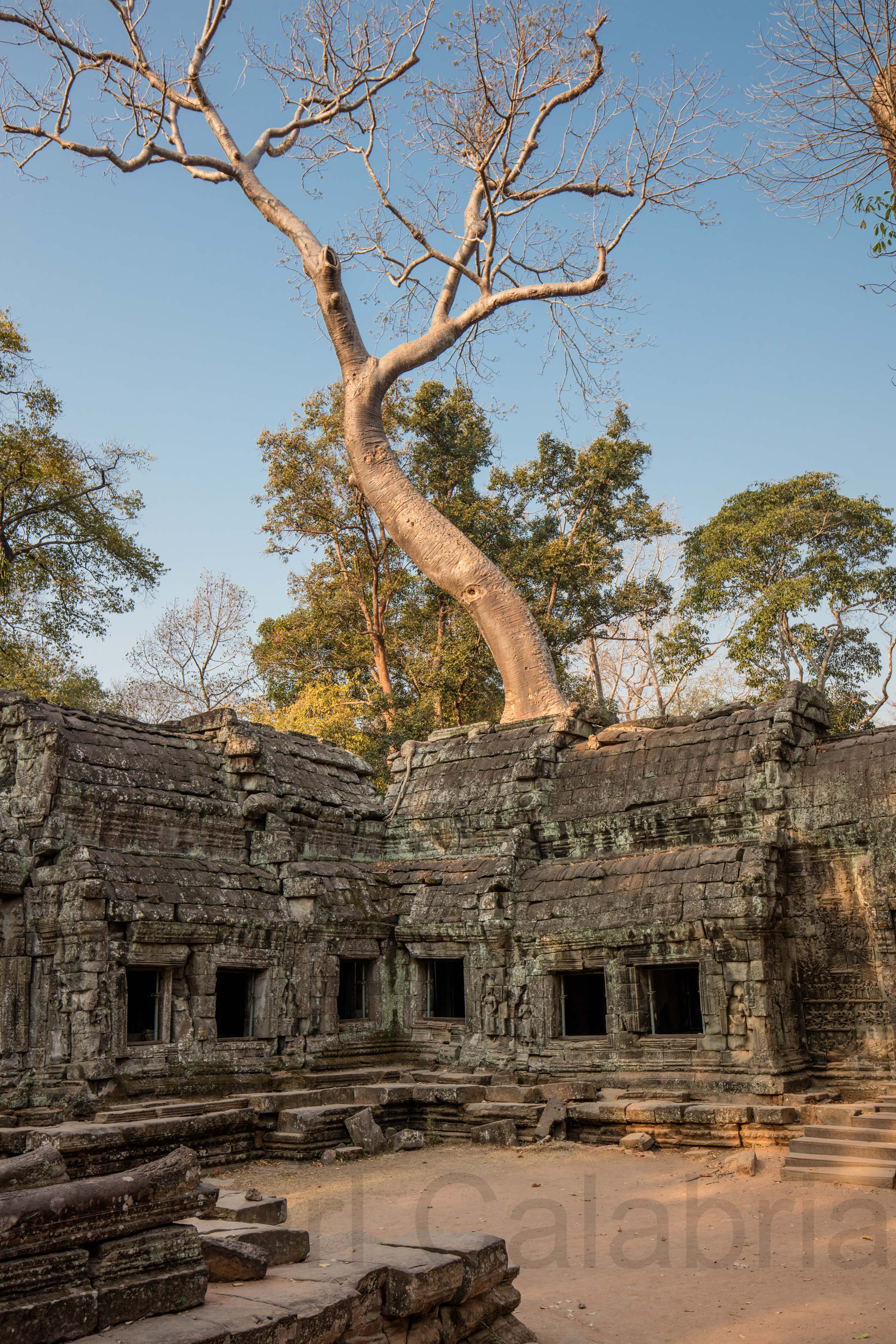
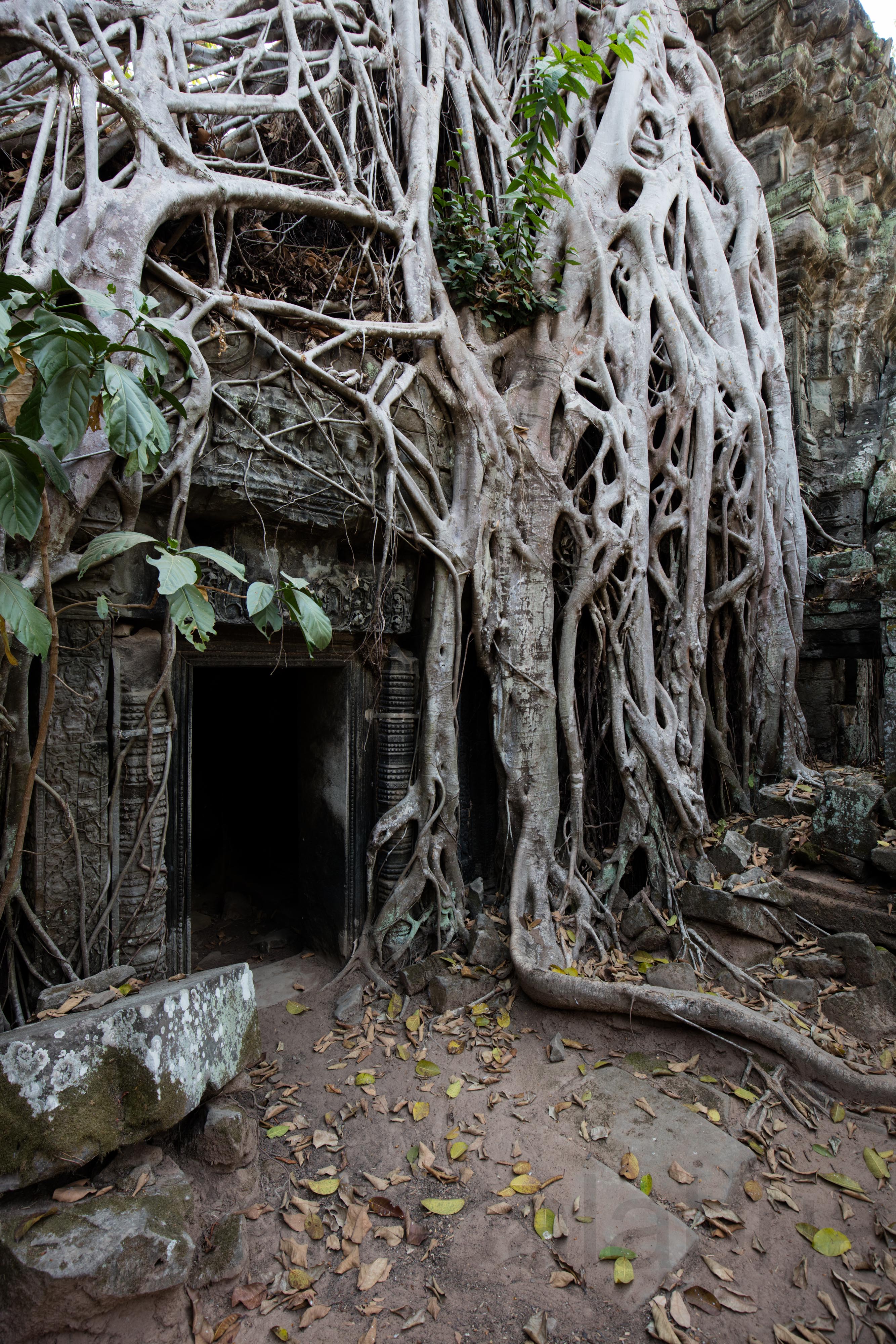
During half-millennia of Khmer occupation, the city of Angkor became a pilgrimage destination of importance throughout Southeastern Asia. Sacked by the Thais in 1431 and abandoned in 1432, Angkor was forgotten for a few centuries. Wandering Buddhist monks, passing through the dense jungles, occasionally came upon the awesome ruins. Recognizing the sacred nature of the temples but ignorant of their origins, they invented fables about the mysterious sanctuaries, saying they had been built by the gods in a far ancient time. Centuries passed, these fables became legends, and pilgrims from the distant reaches of Asia sought out the mystic city of the gods. A few adventurous European travelers knew of the ruins and stories circulated in antiquarian circles of a strange city lost in the jungles. Most people believed the stories to be nothing more than legend, however, until the French explorer Henri Mouhot brought Angkor to the world’s attention in 1860. The French people were enchanted with the ancient city and beginning in 1908 funded and superbly managed an extensive restoration project.
Angkor Thom was built as a square, the sides of which run exactly north to south and east to west. Standing in the exact center of the walled city, Bayon Temple represents the intersection of heaven and earth. Bayon is known for its huge stone faces of the bodhisattva Avalokiteshvara, with one facing outward and keeping watch at each compass point. The curious smiling image, thought by many to be a portrait of Jayavarman himself, has been dubbed by some the “Mona Lisa of Southeast Asia.” There are 51 smaller towers surrounding Bayon, each with four faces of its own.
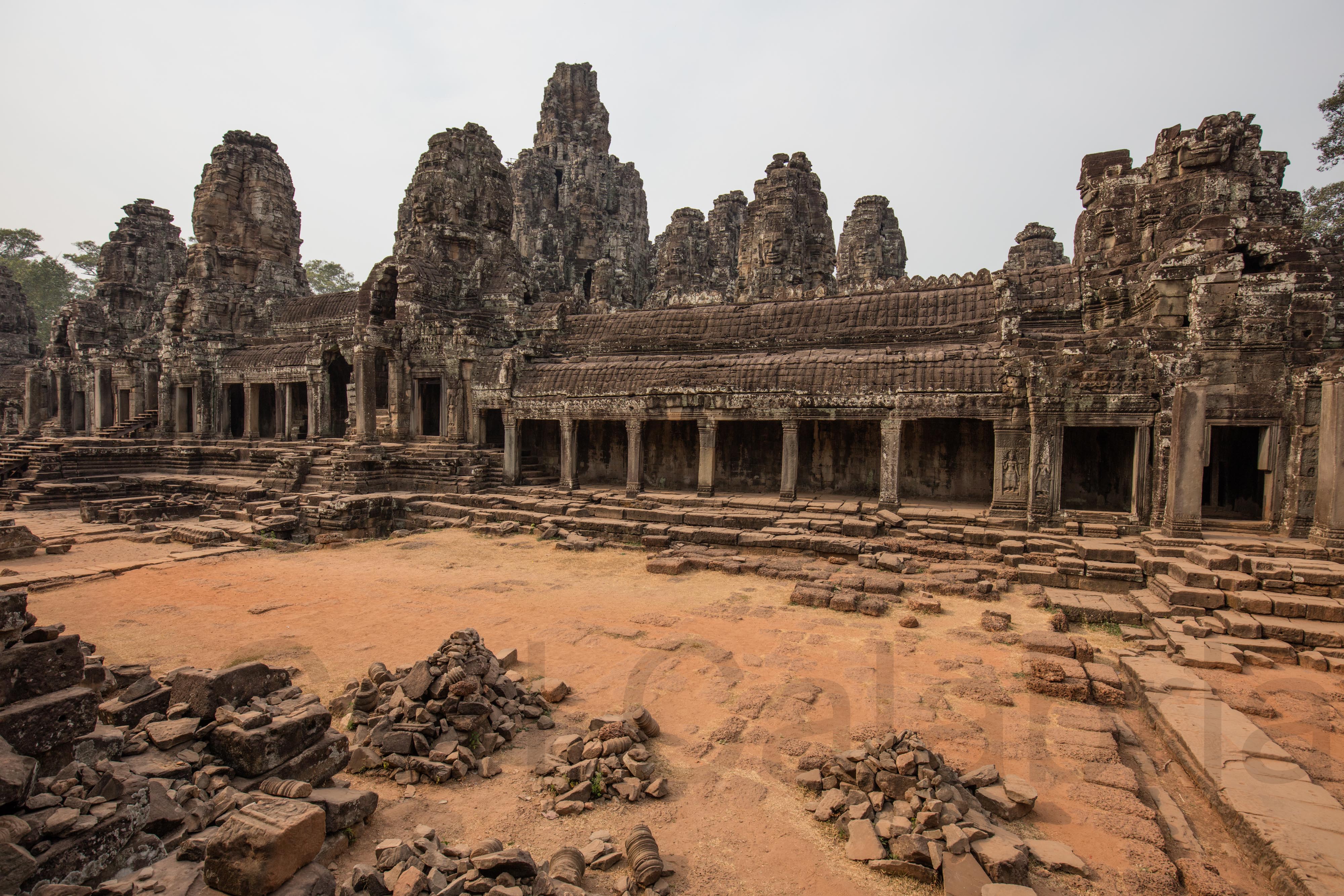
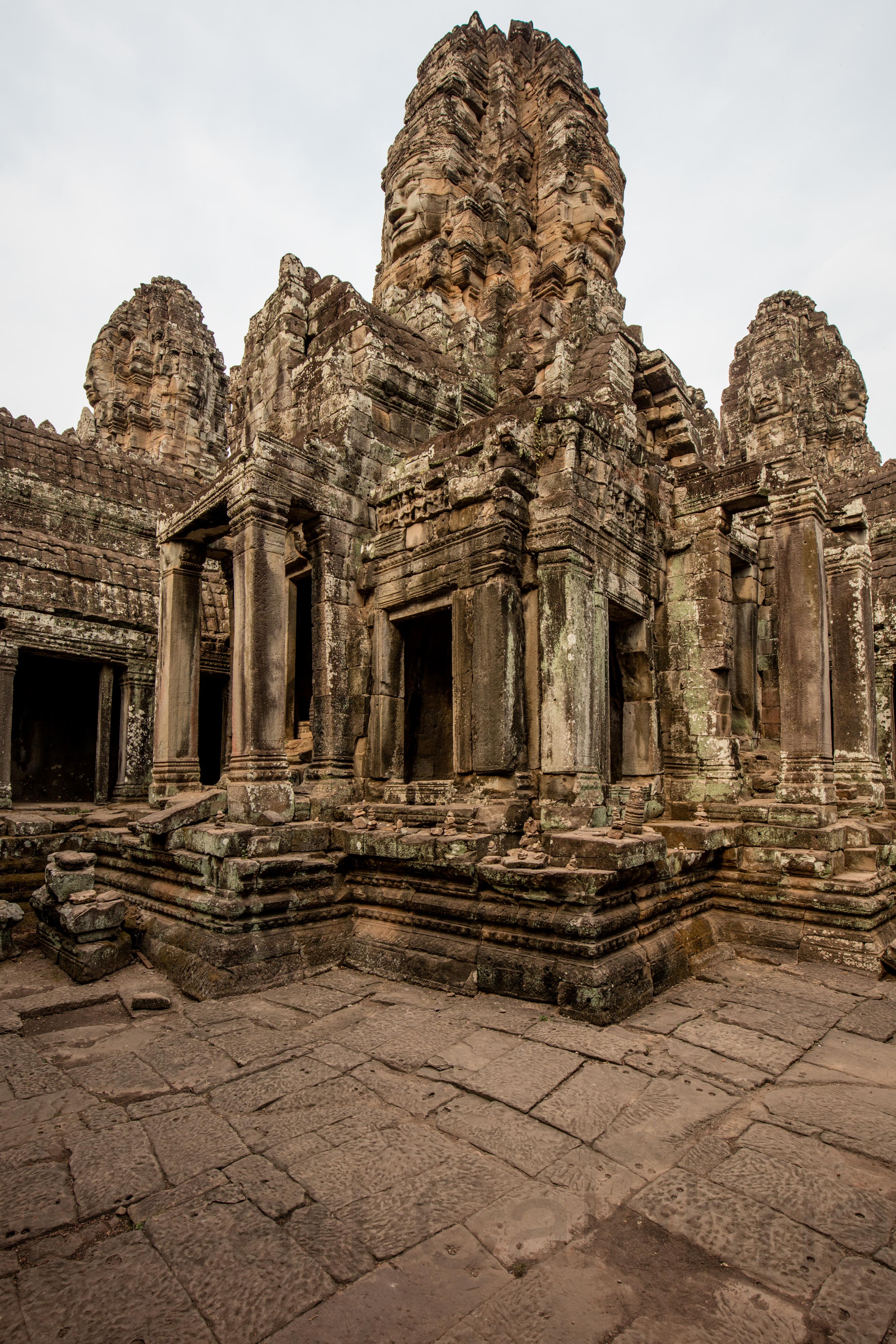
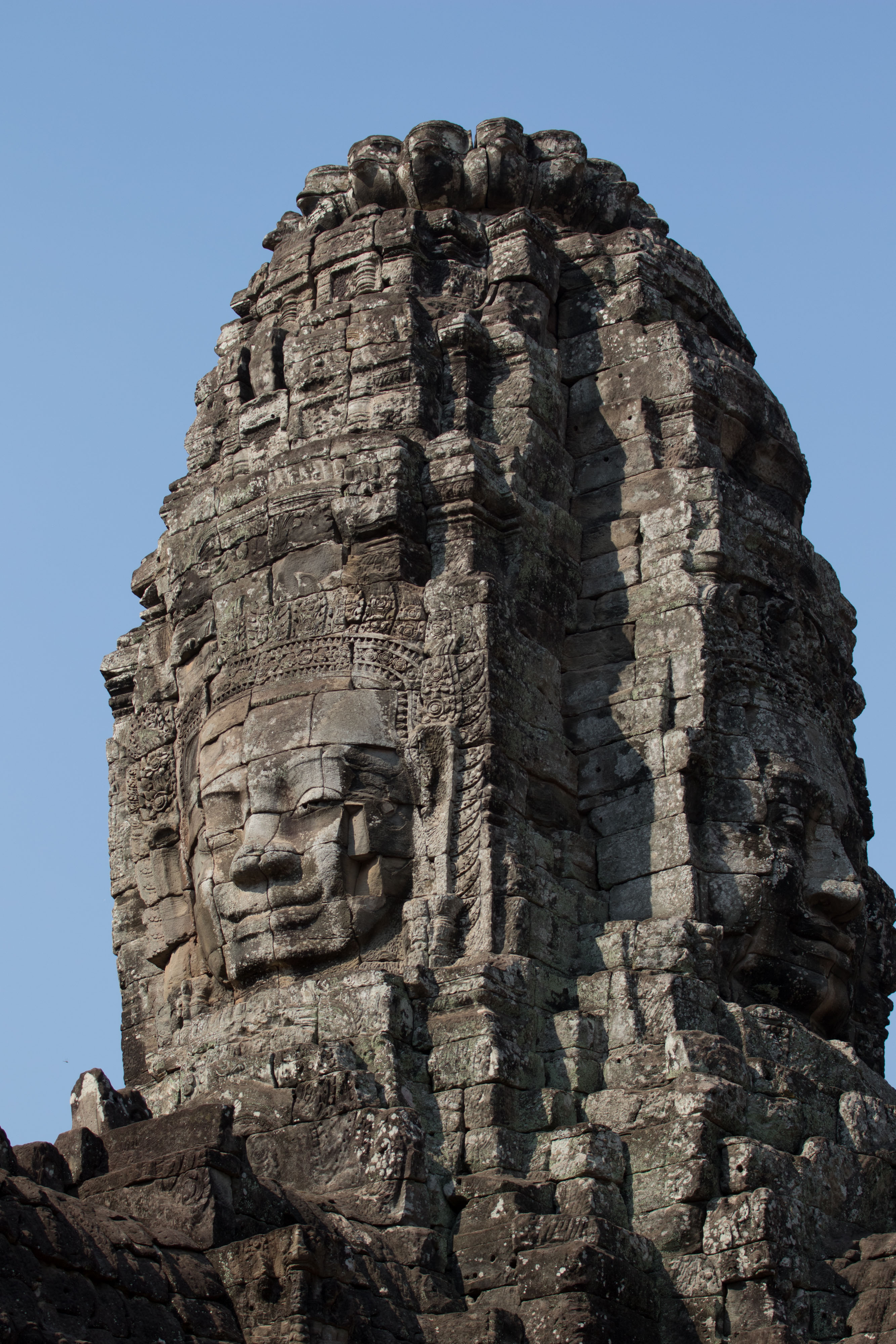
Baphuon was erected in the reign of Udayadityavarman II, who ruled from 1050-1066. It served as the state temple of Yasodharapura, the capital city of the Khmer empire in the 11th century.
As with Angkor Wat, the Baphuon was converted to a Buddhist temple in the 16th century. This involved the demolition of the outer galleries, causeway stones, and other structures to reuse the material for construction of an enormous reclining Buddha statue on the west side of the temple. The work was never completed, however, and the half-finished Buddha is only barely distinguishable.
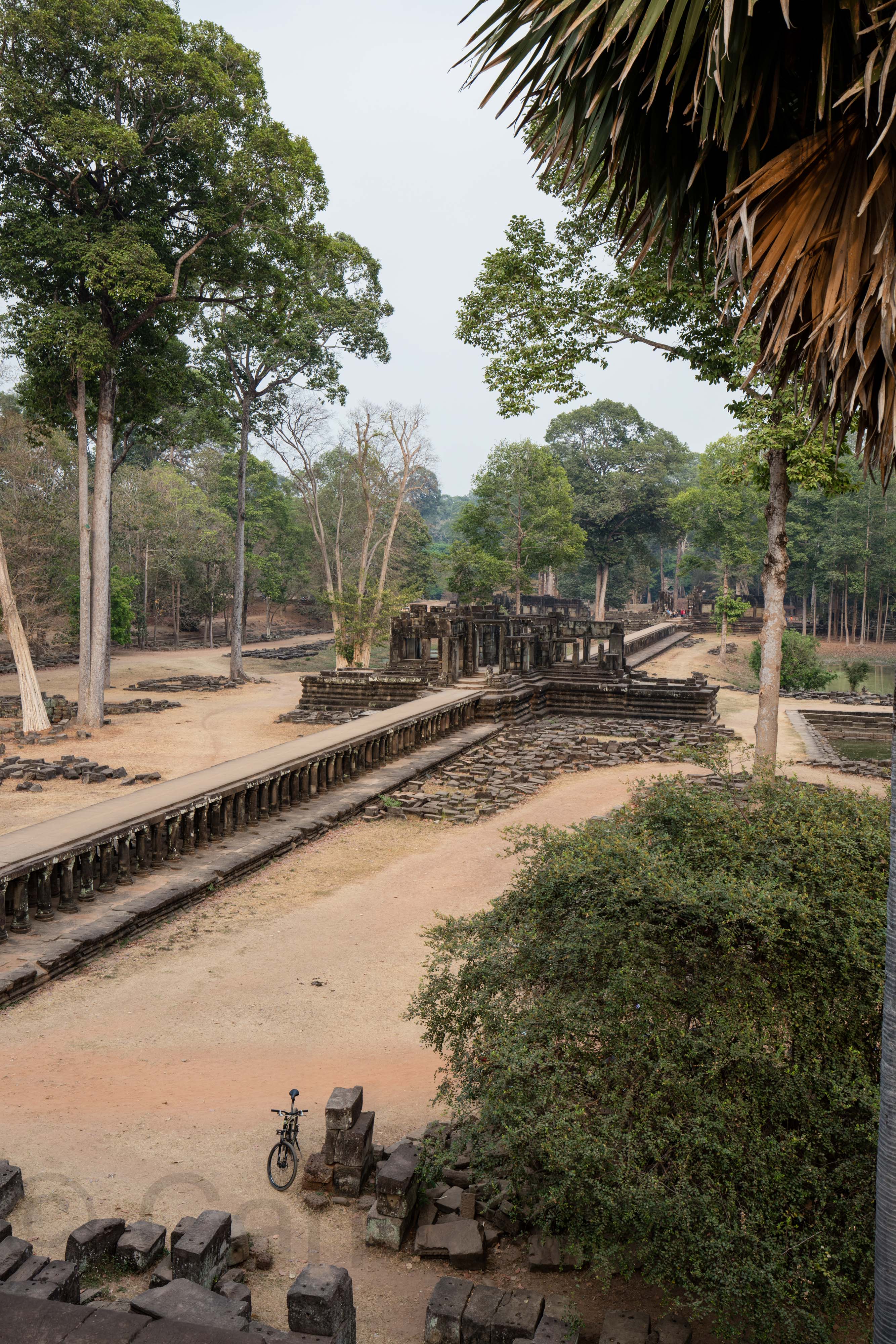
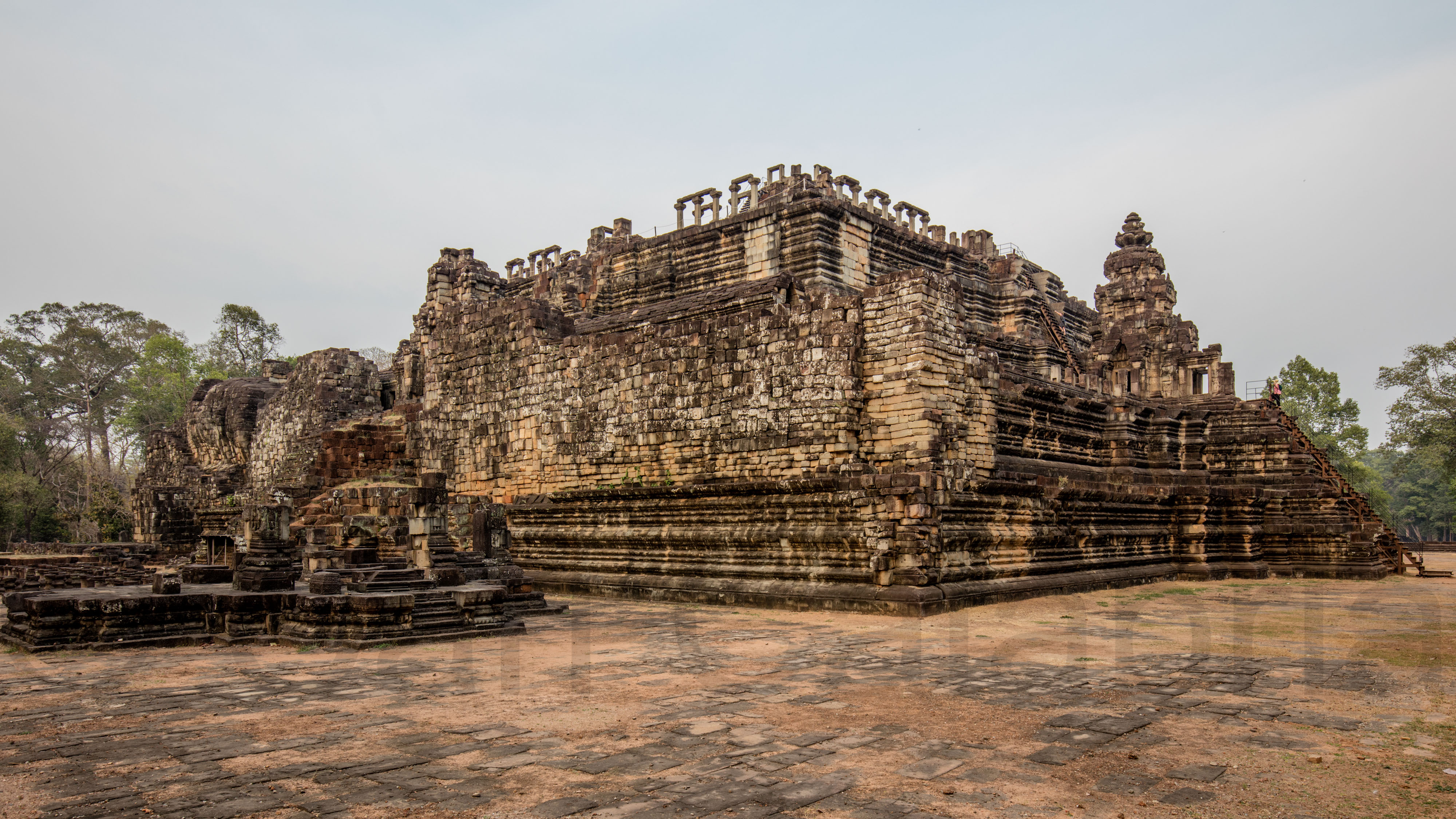
The Terrace of the Elephant King is an 8 foot tall terrace that stretches a thousand feet through the core of Angkor Thom. It is considered to be the magnum opus of King Jayavarman VII’s kingship, and perhaps the grandest royal terrace in Cambodia.
